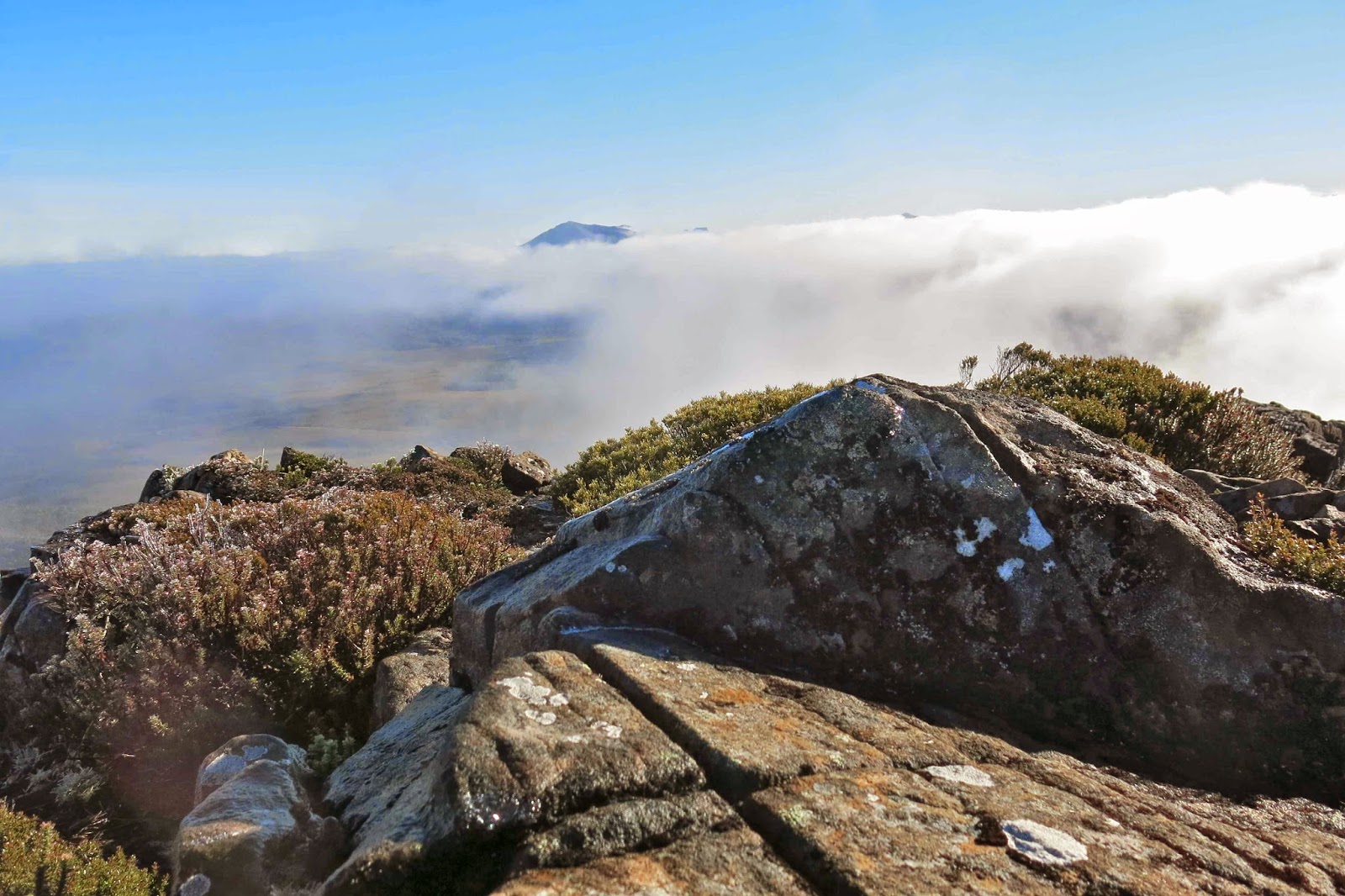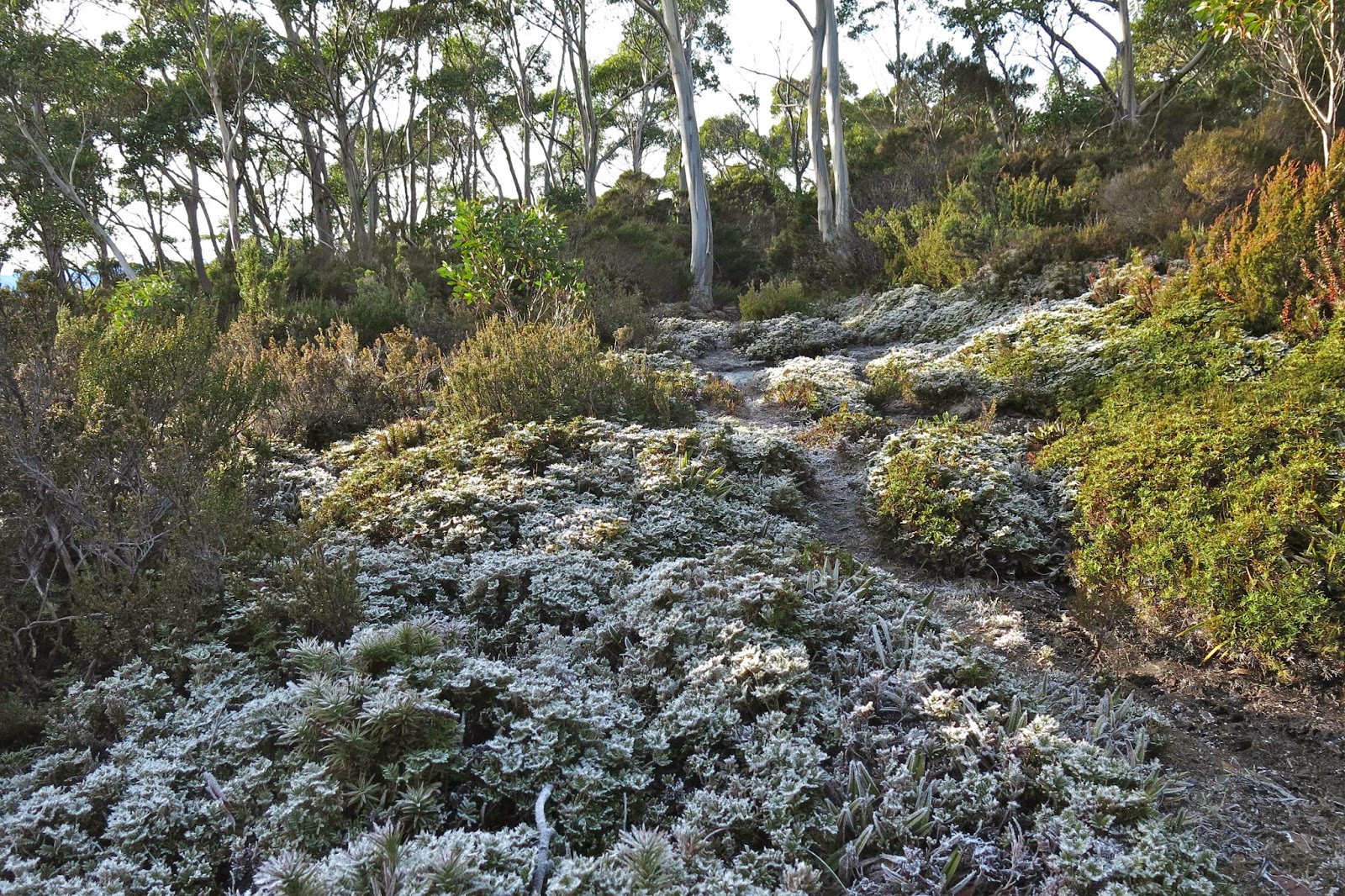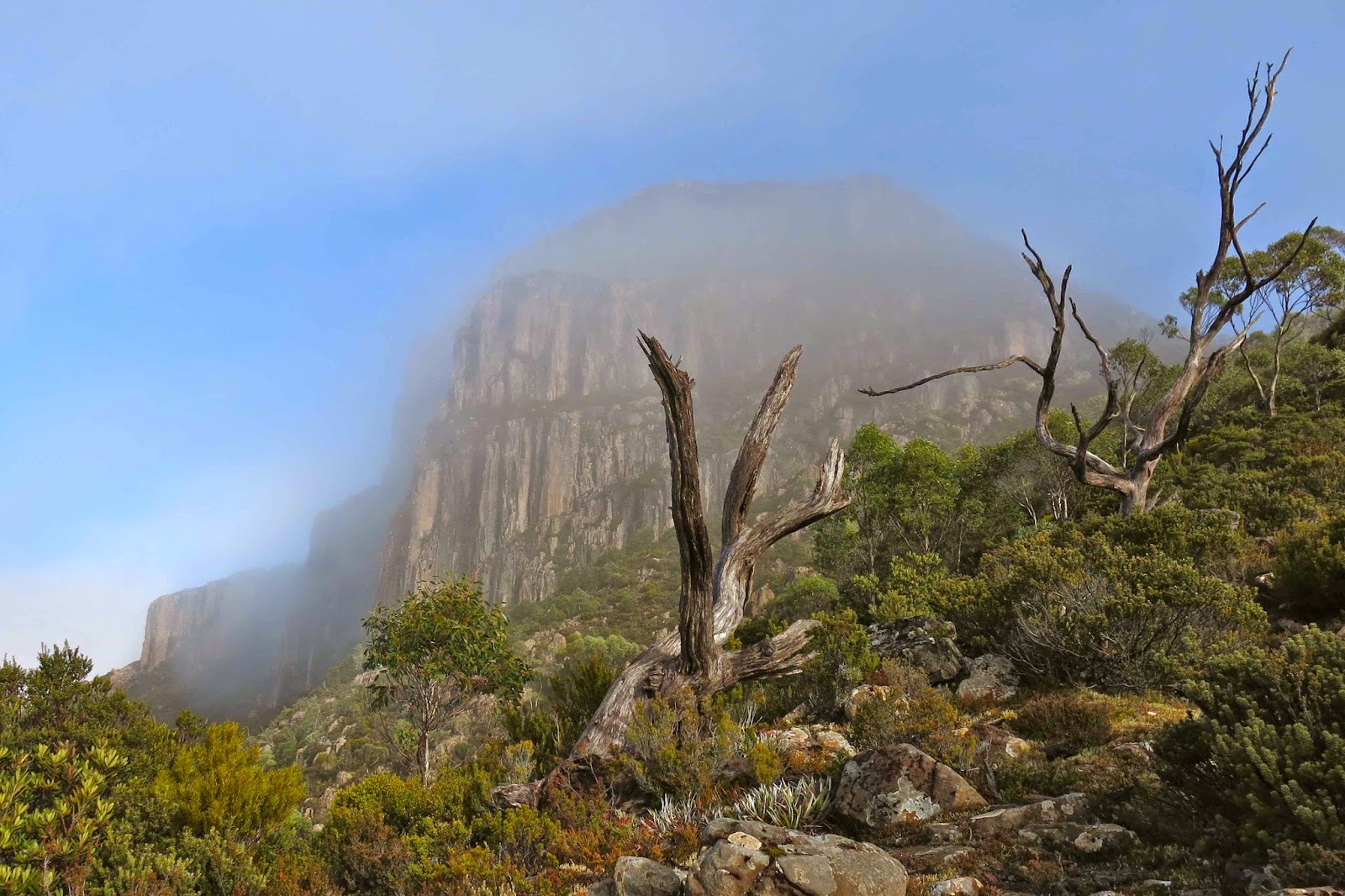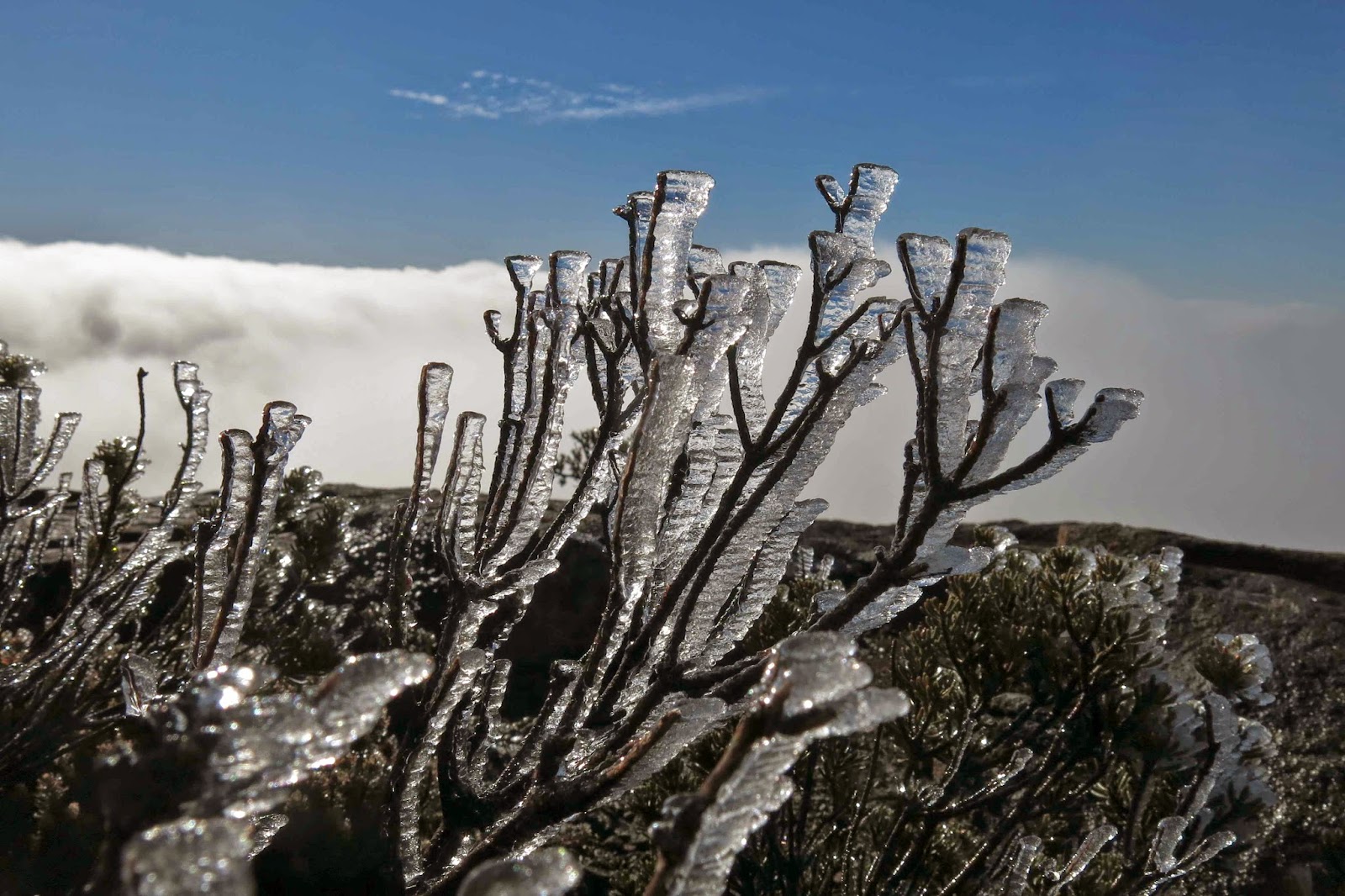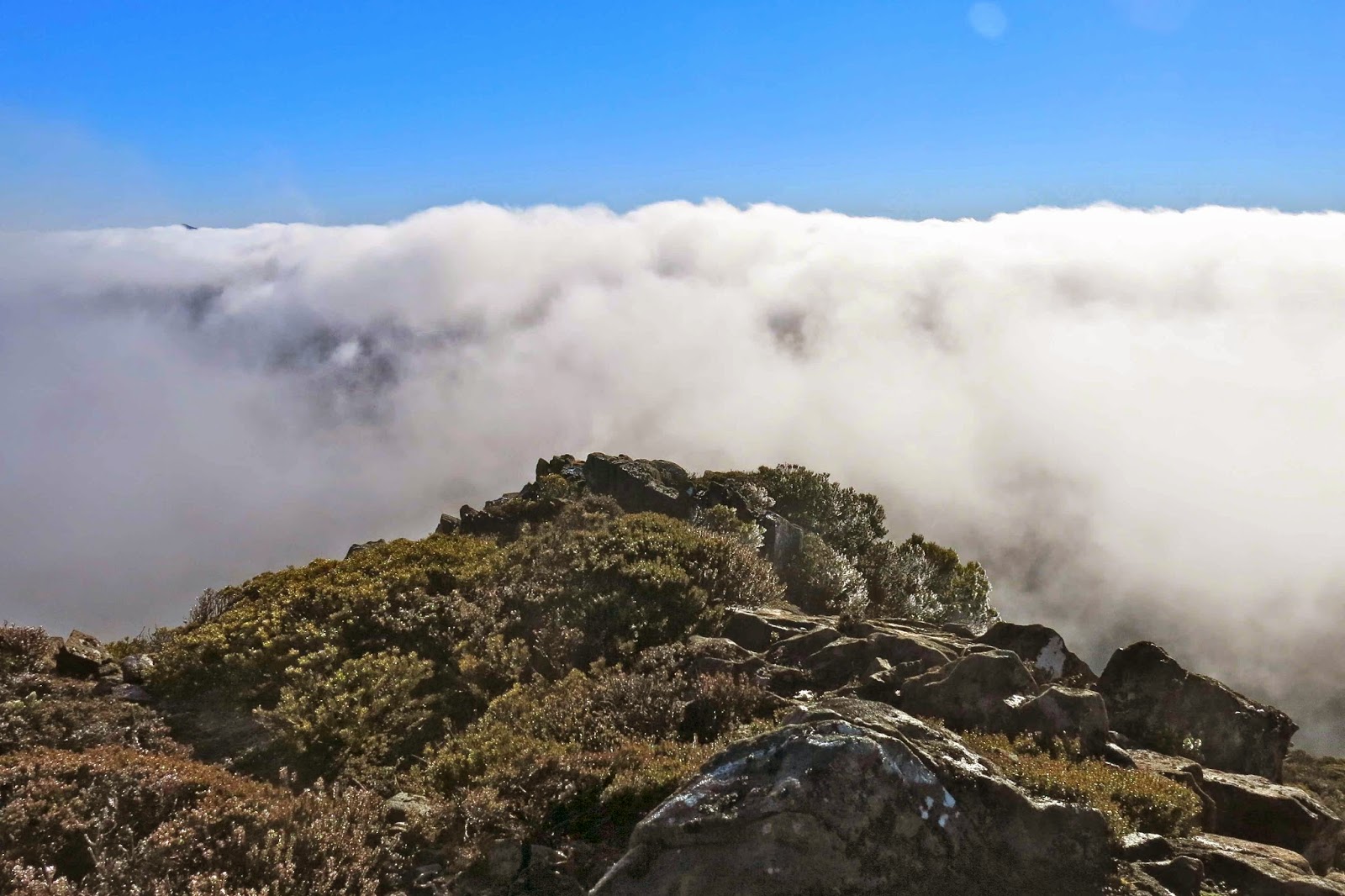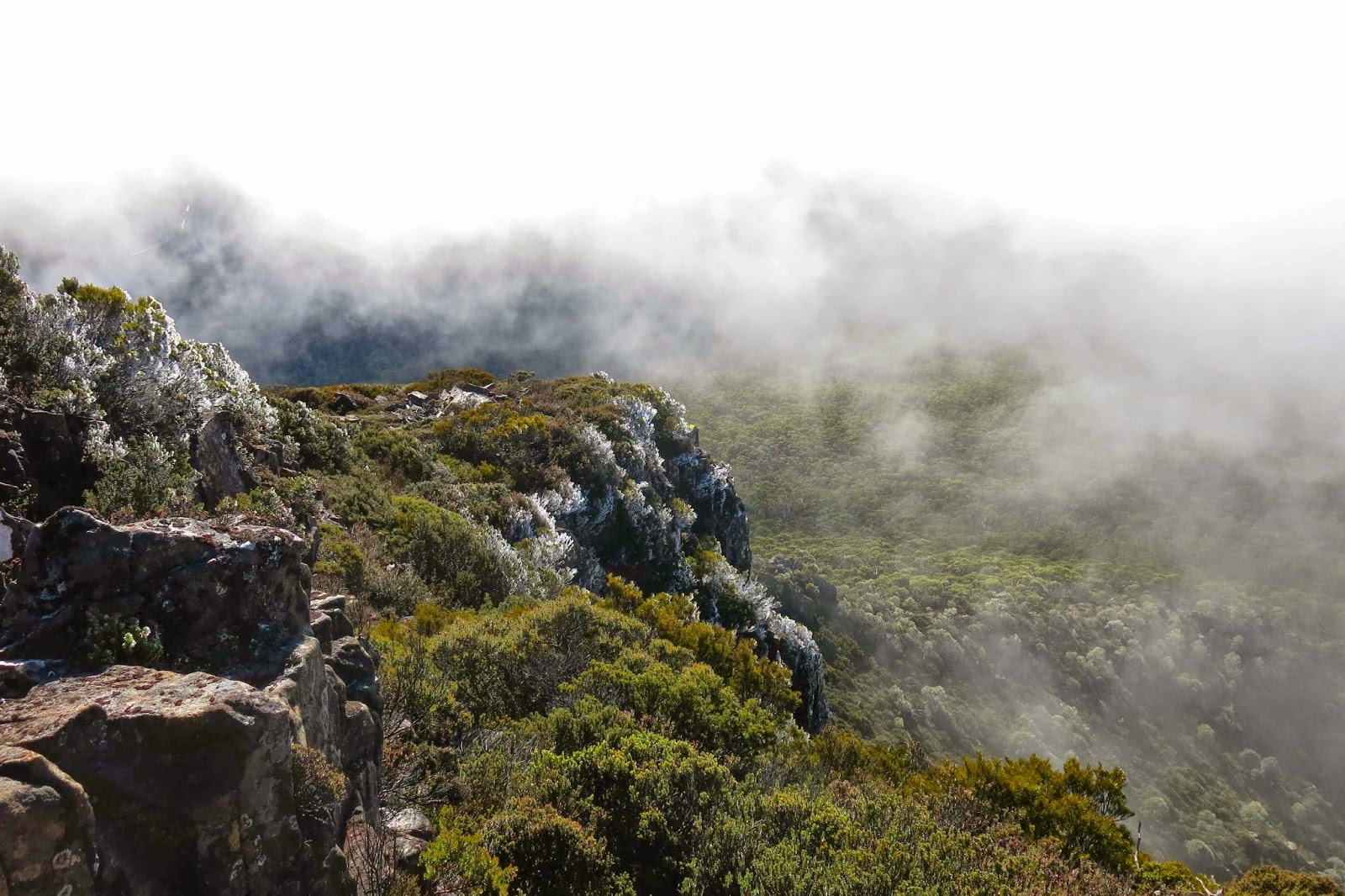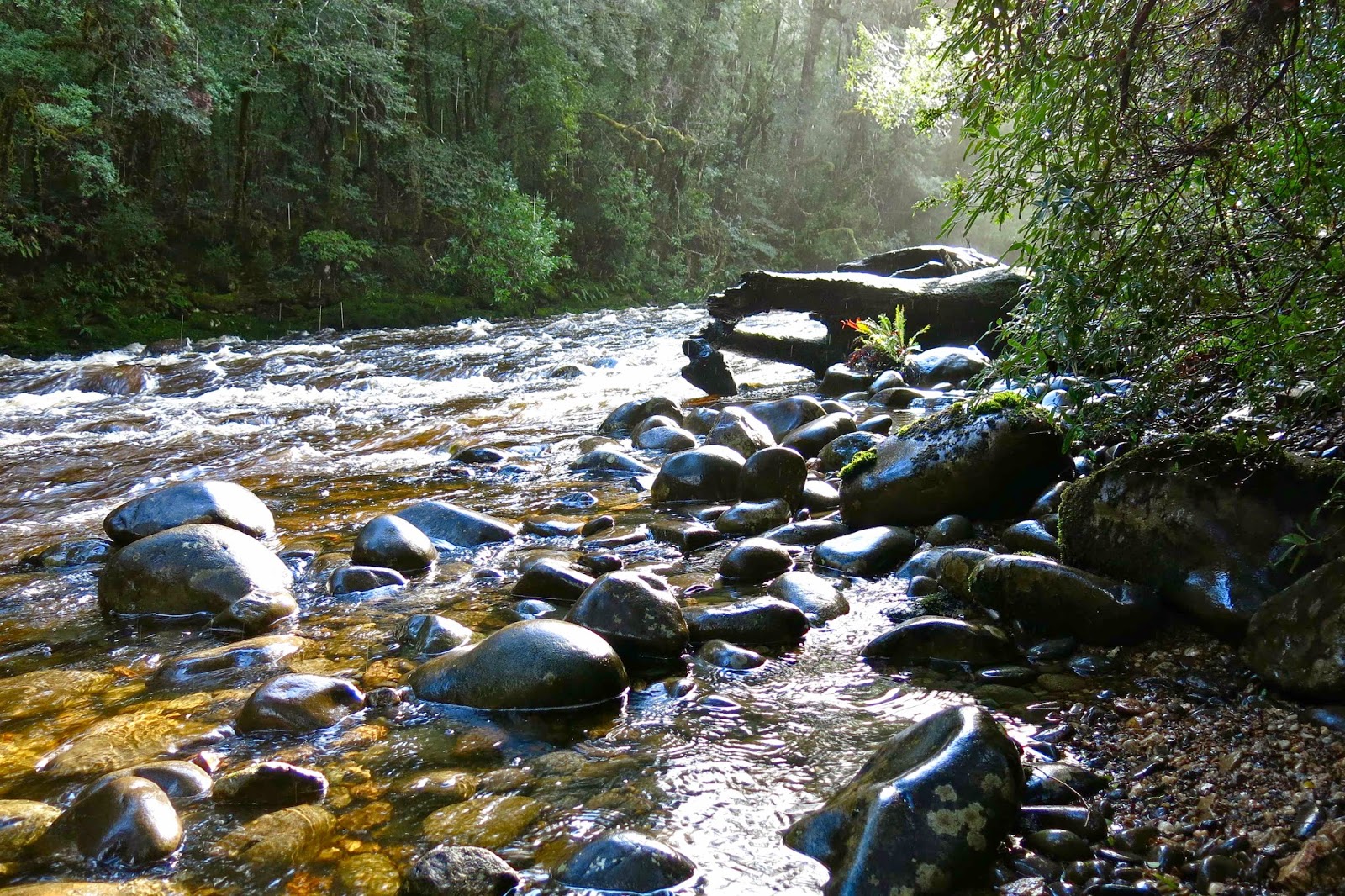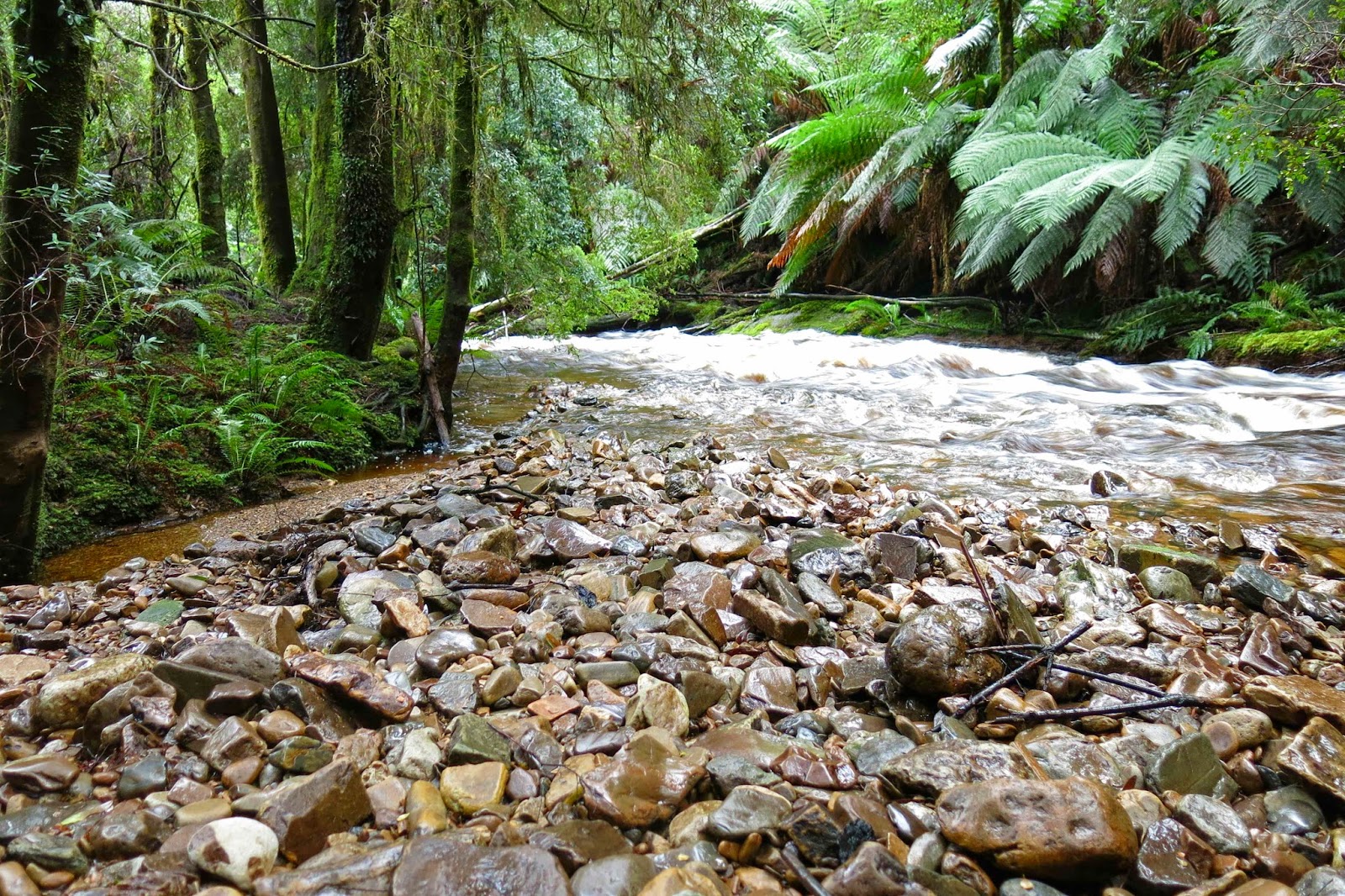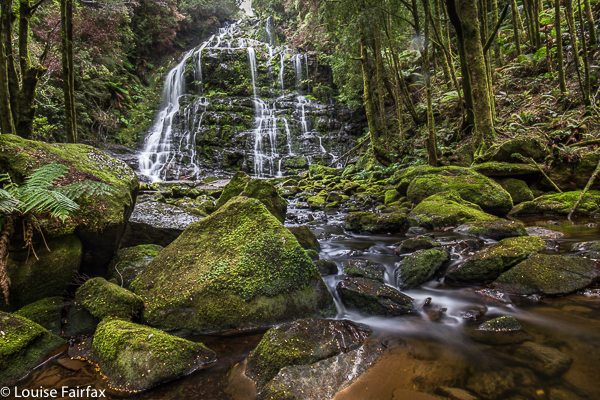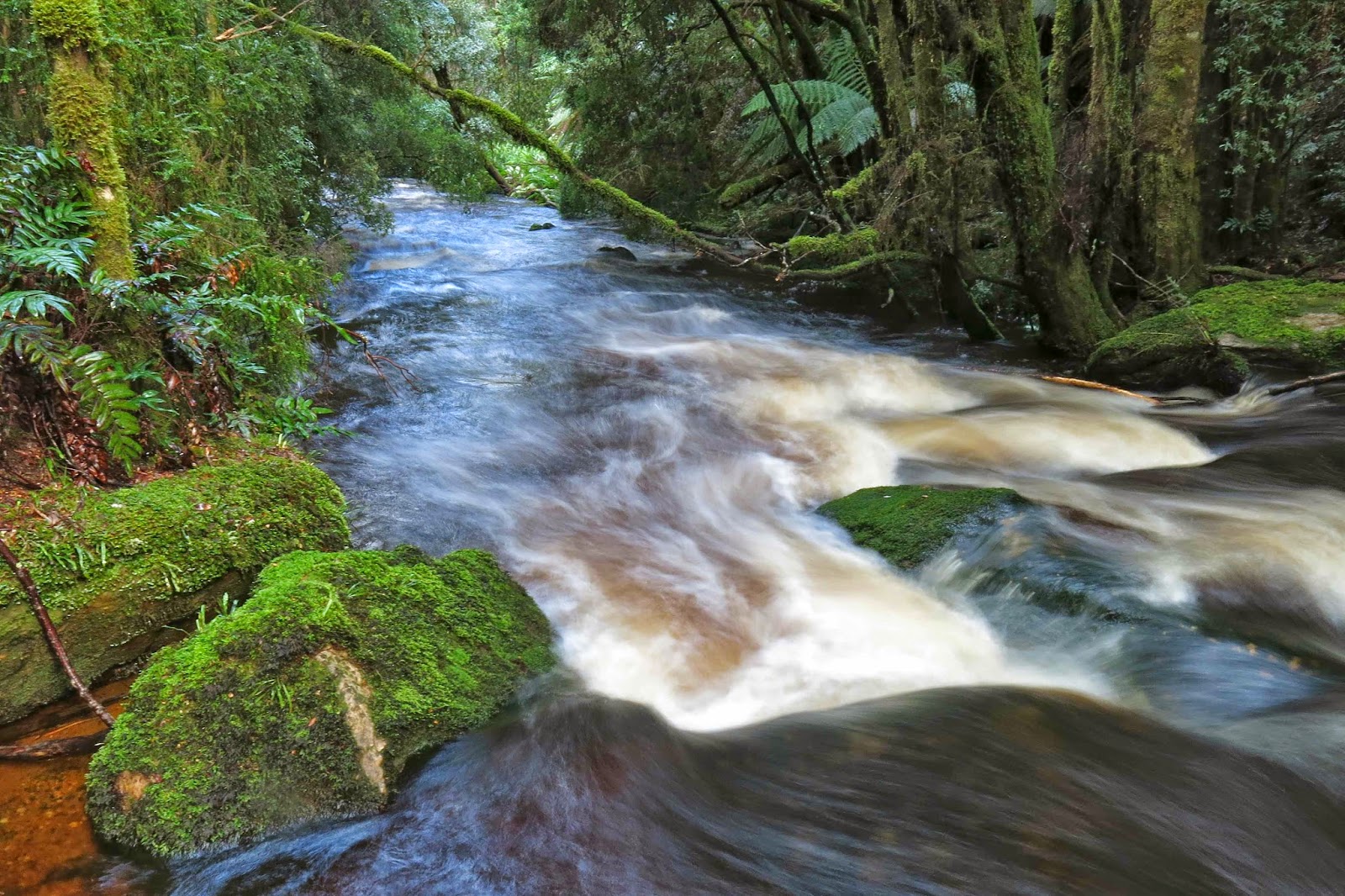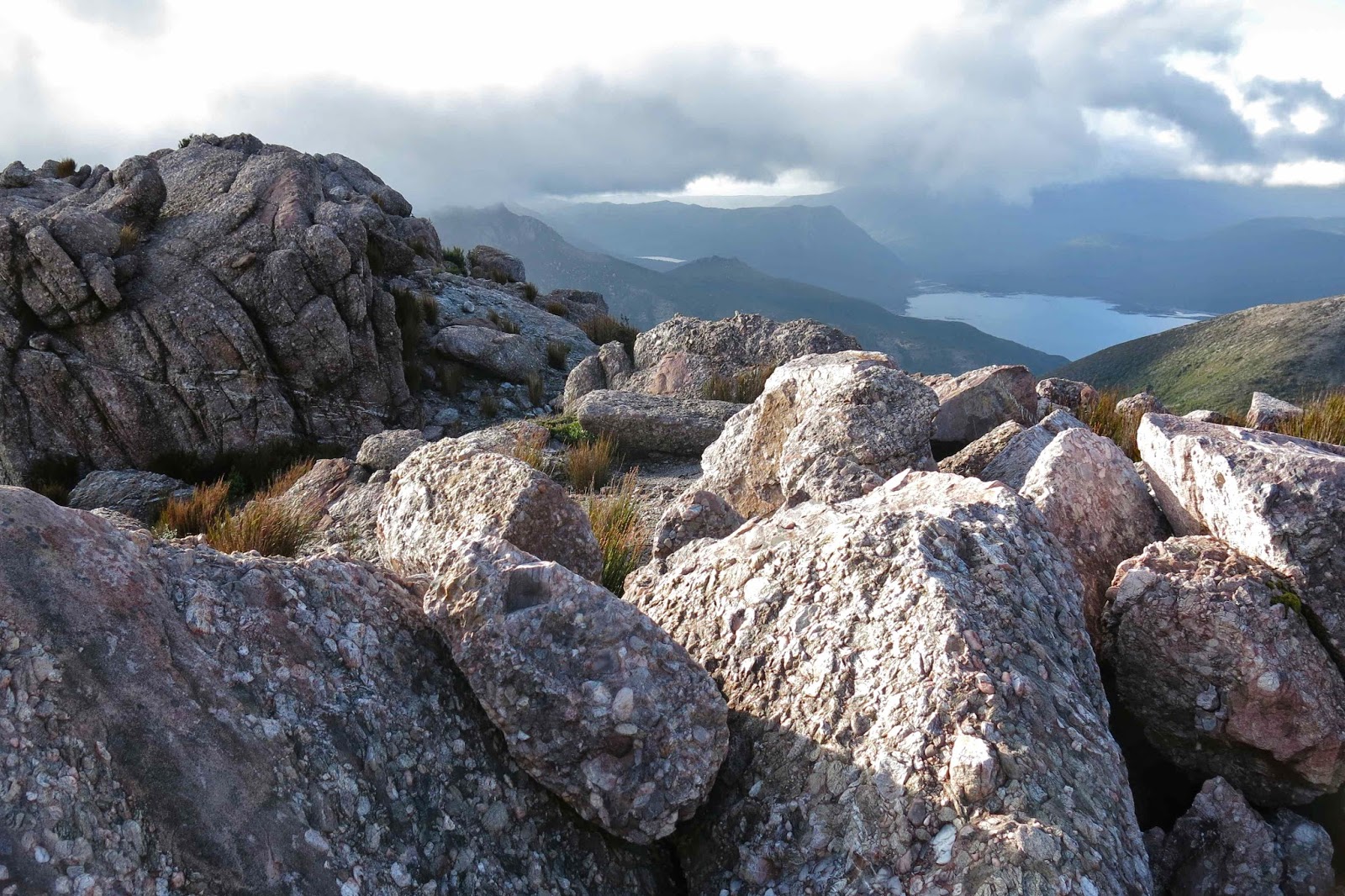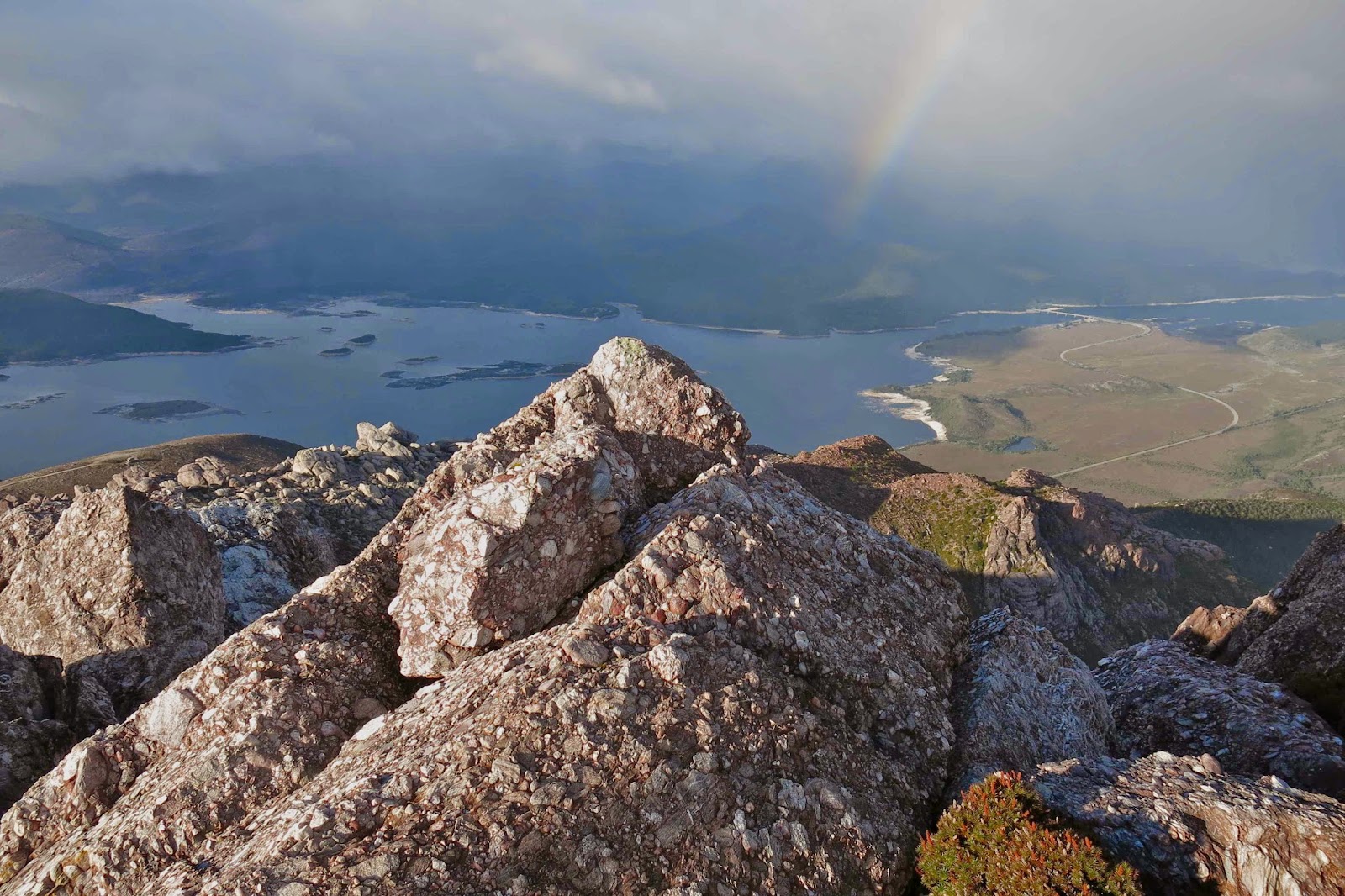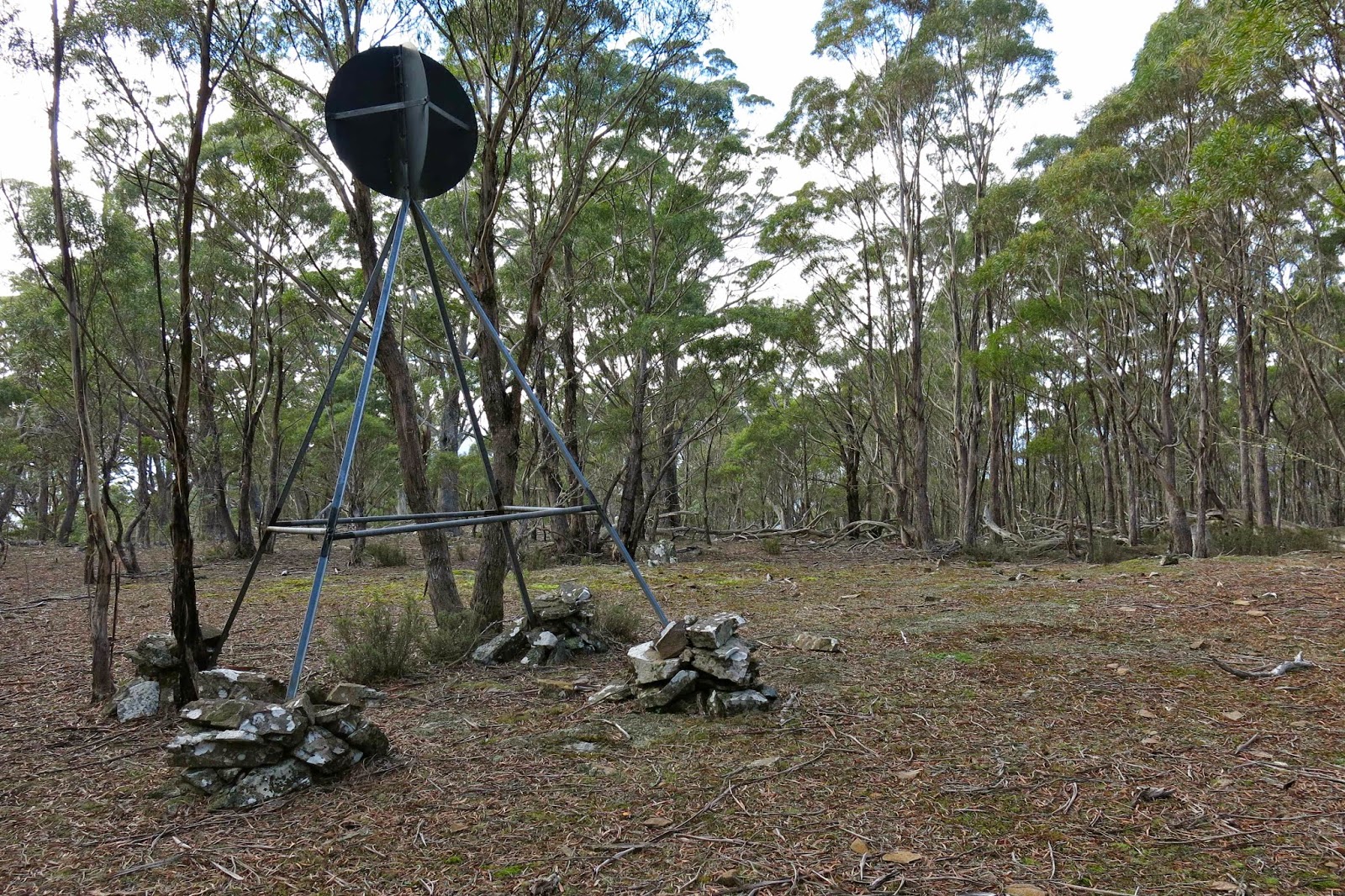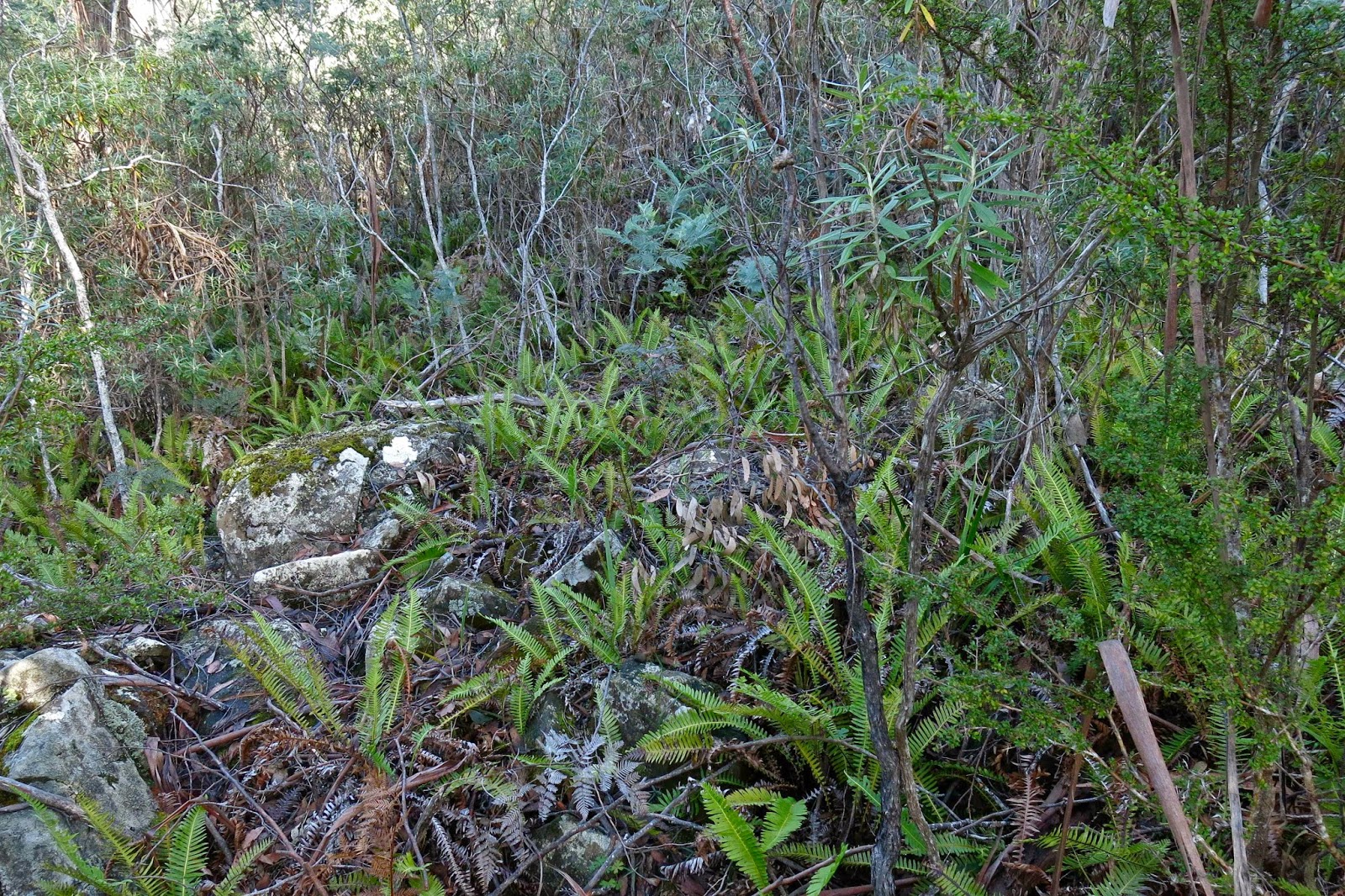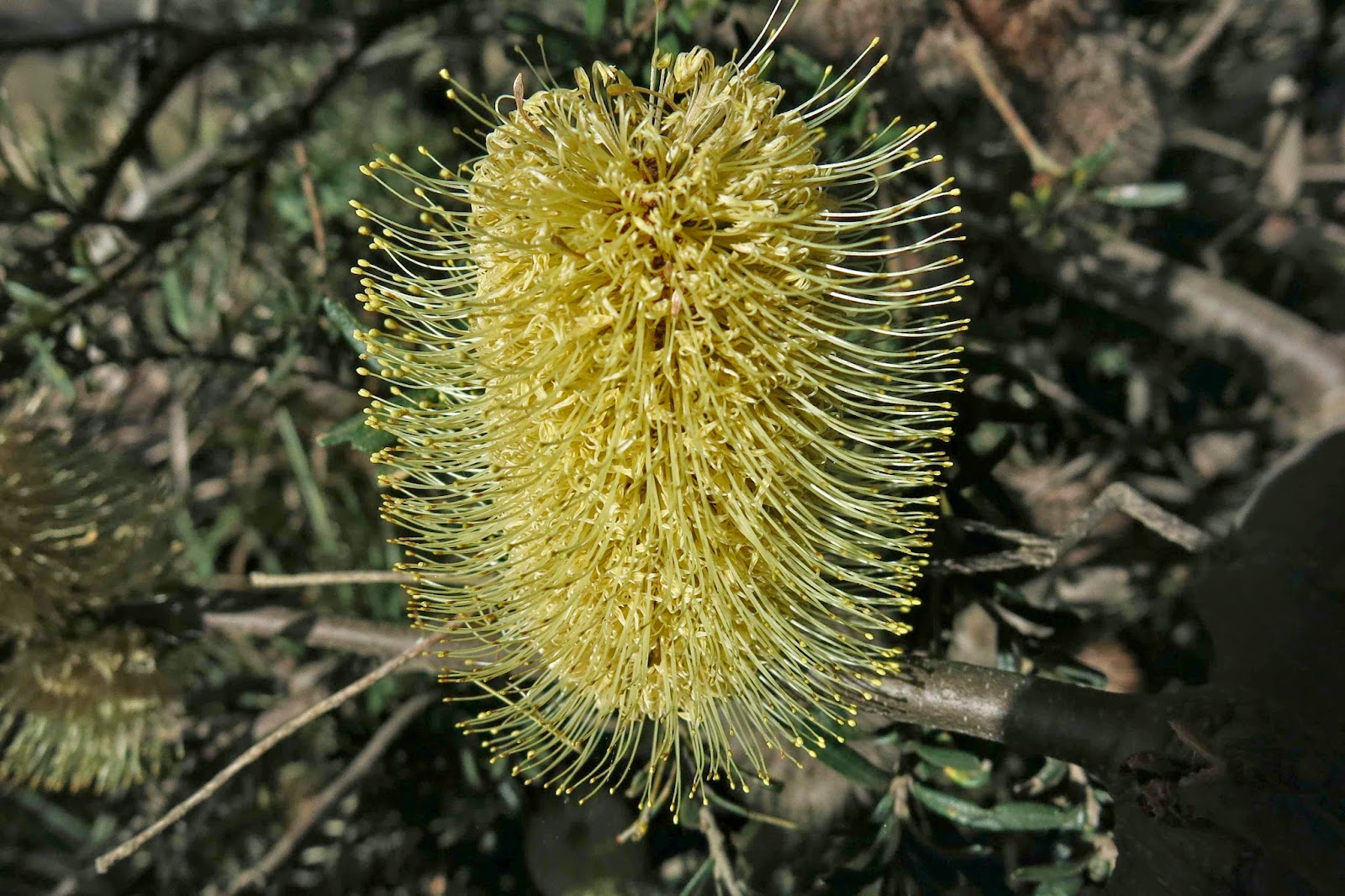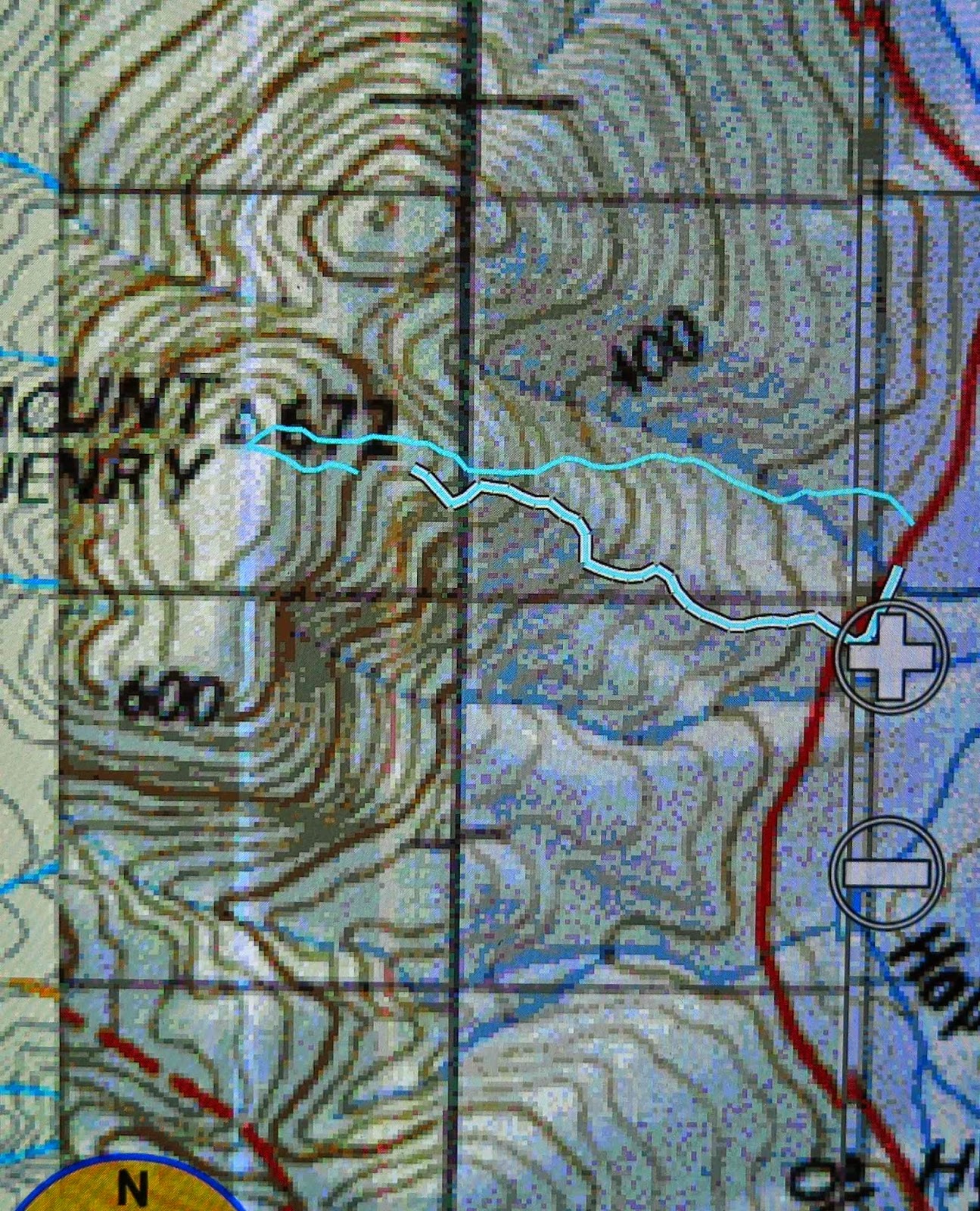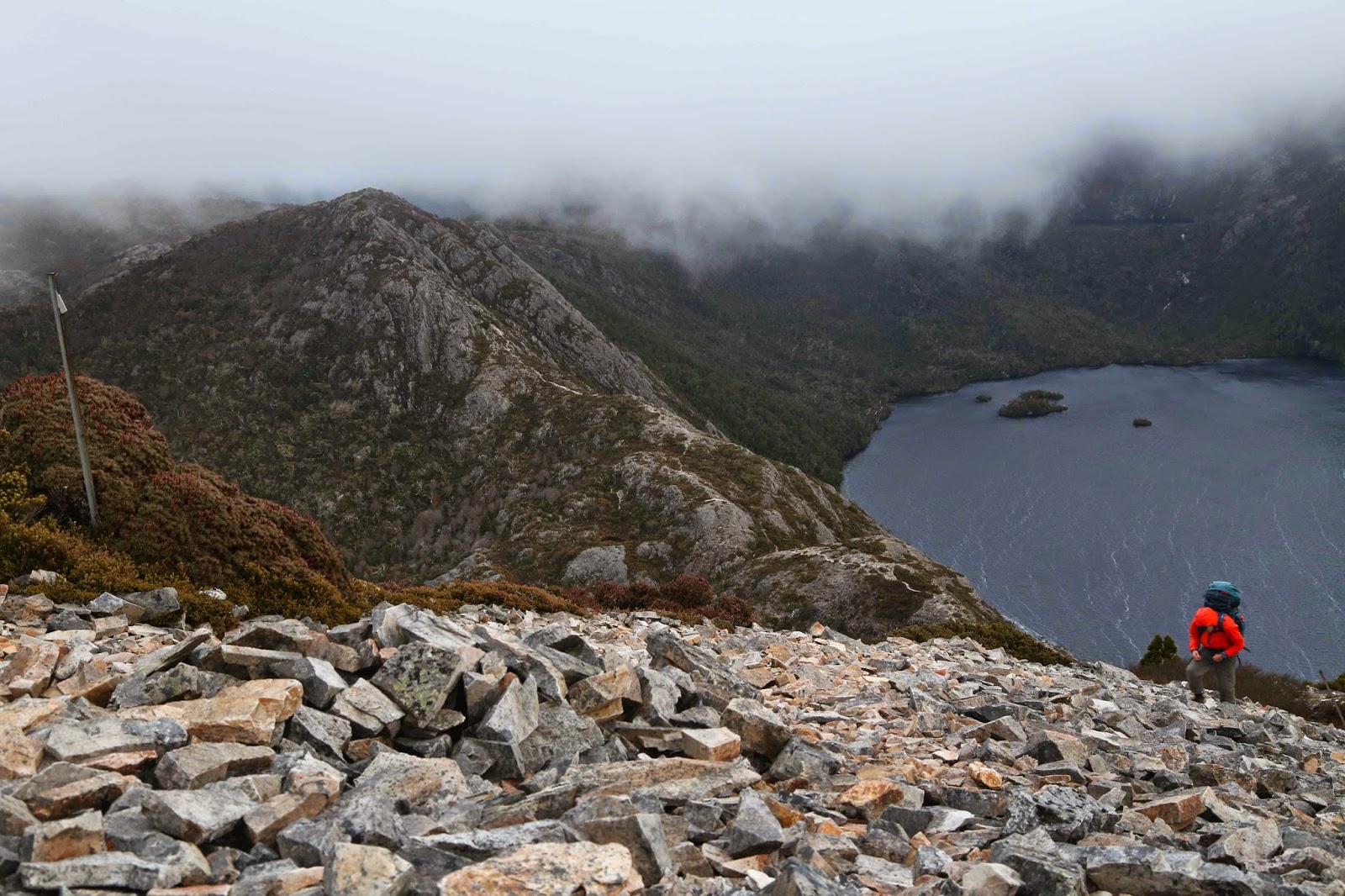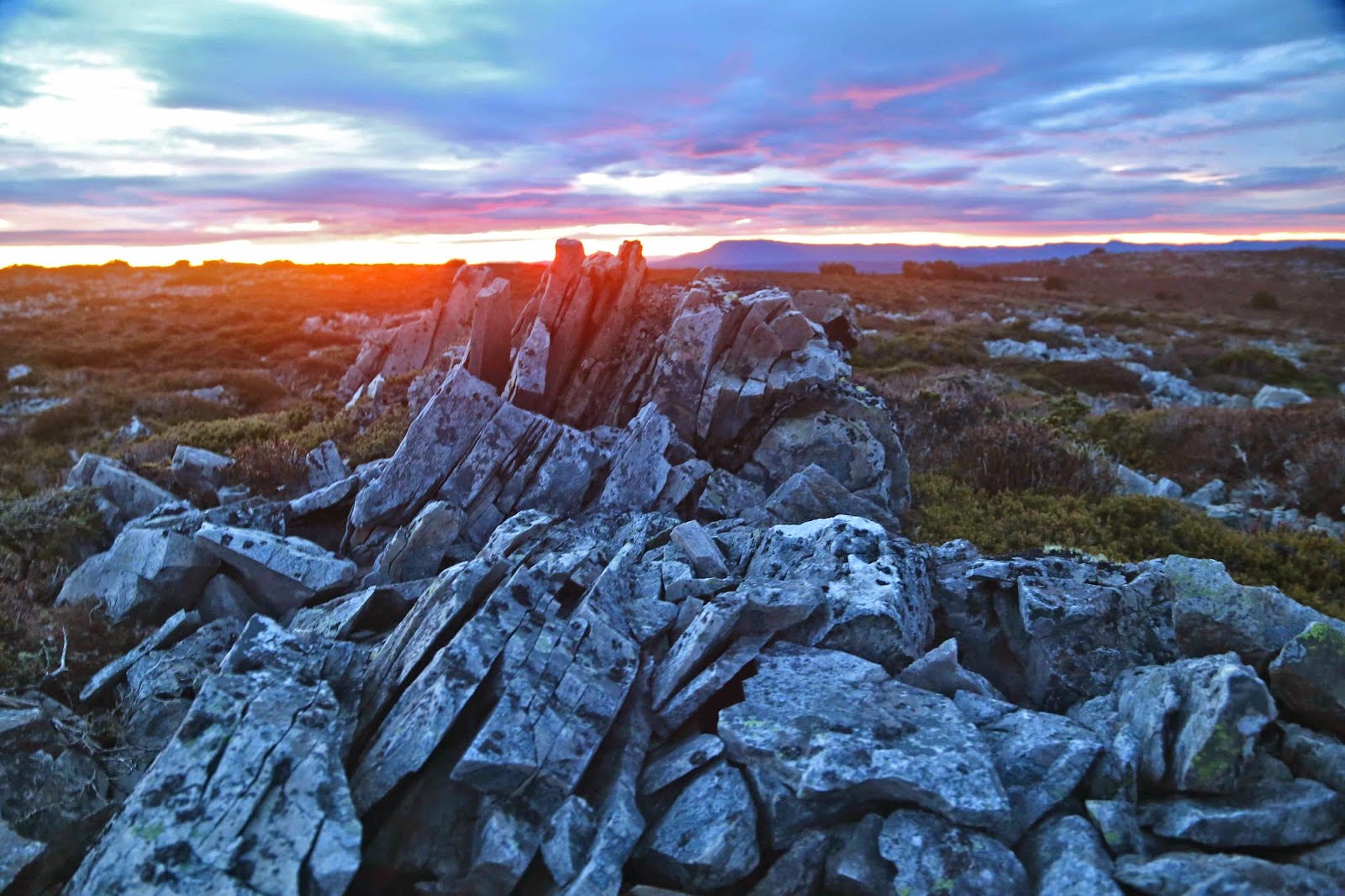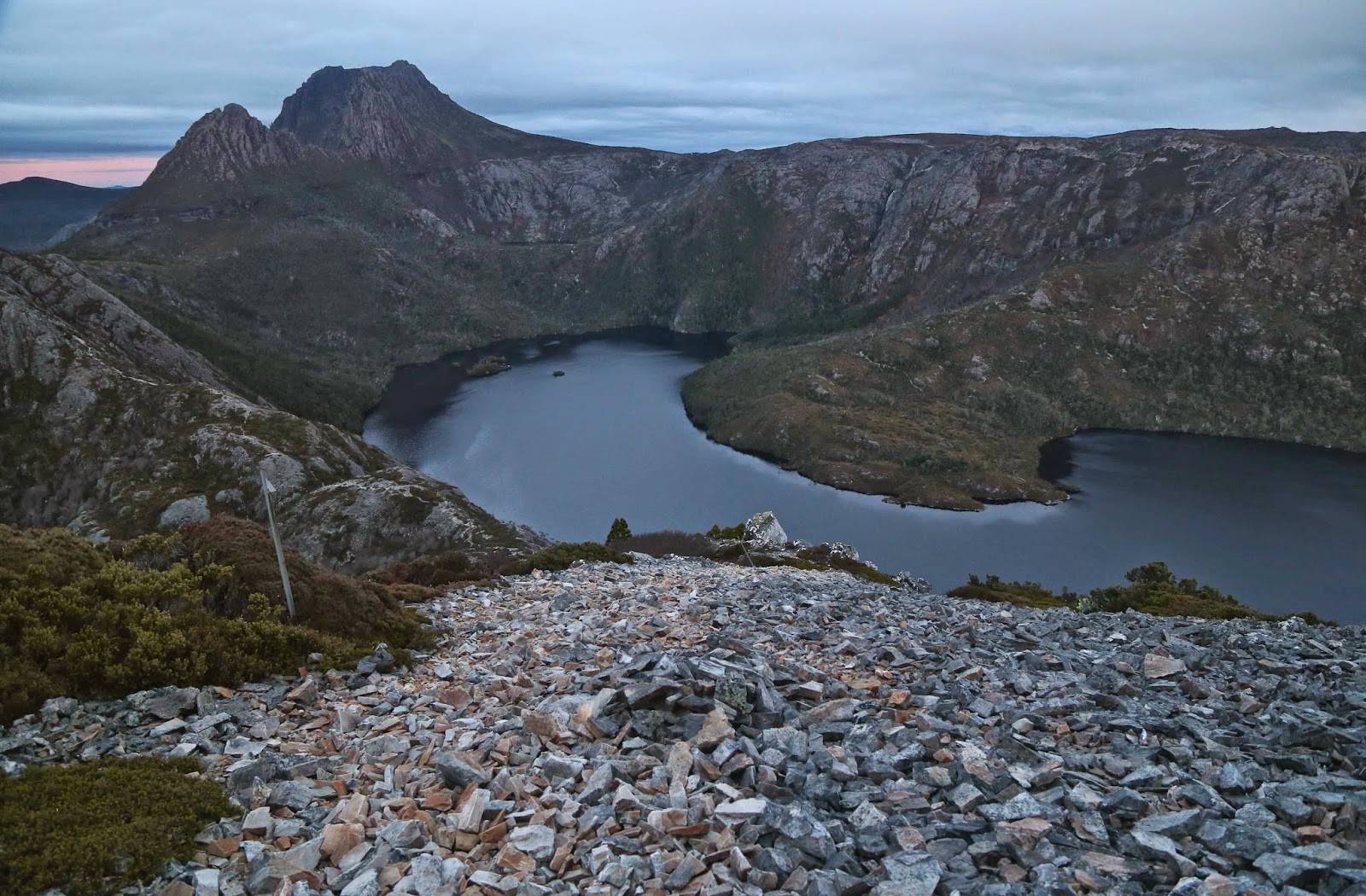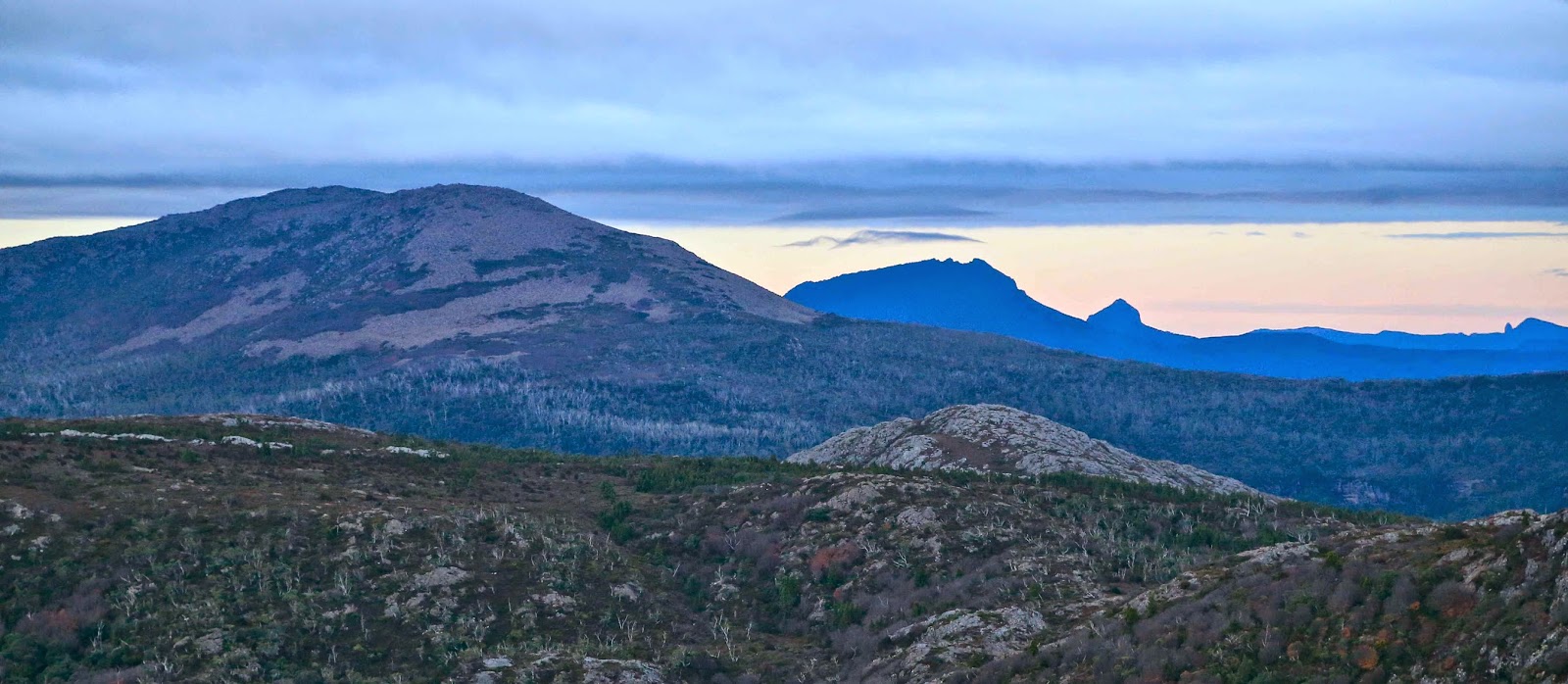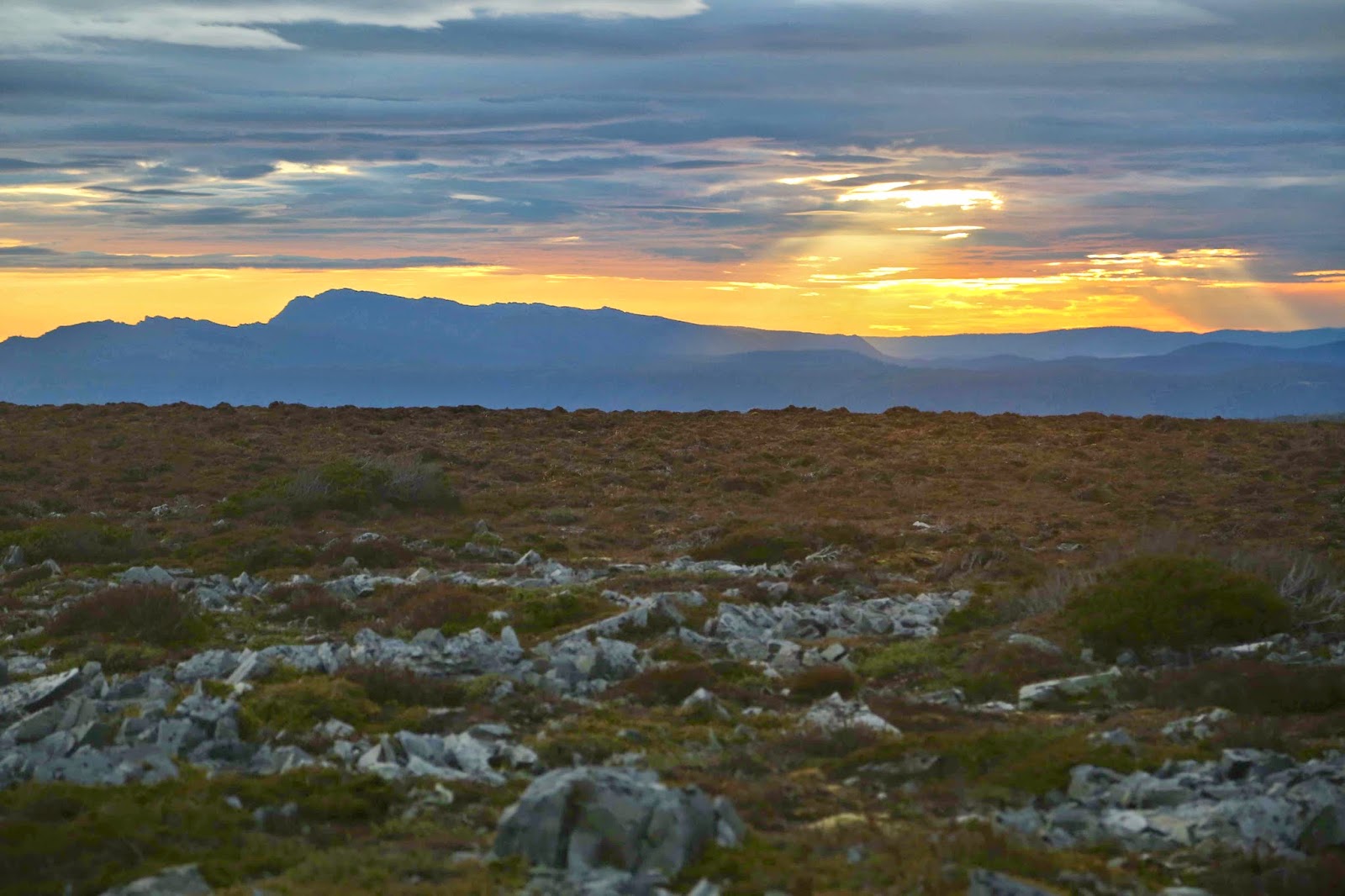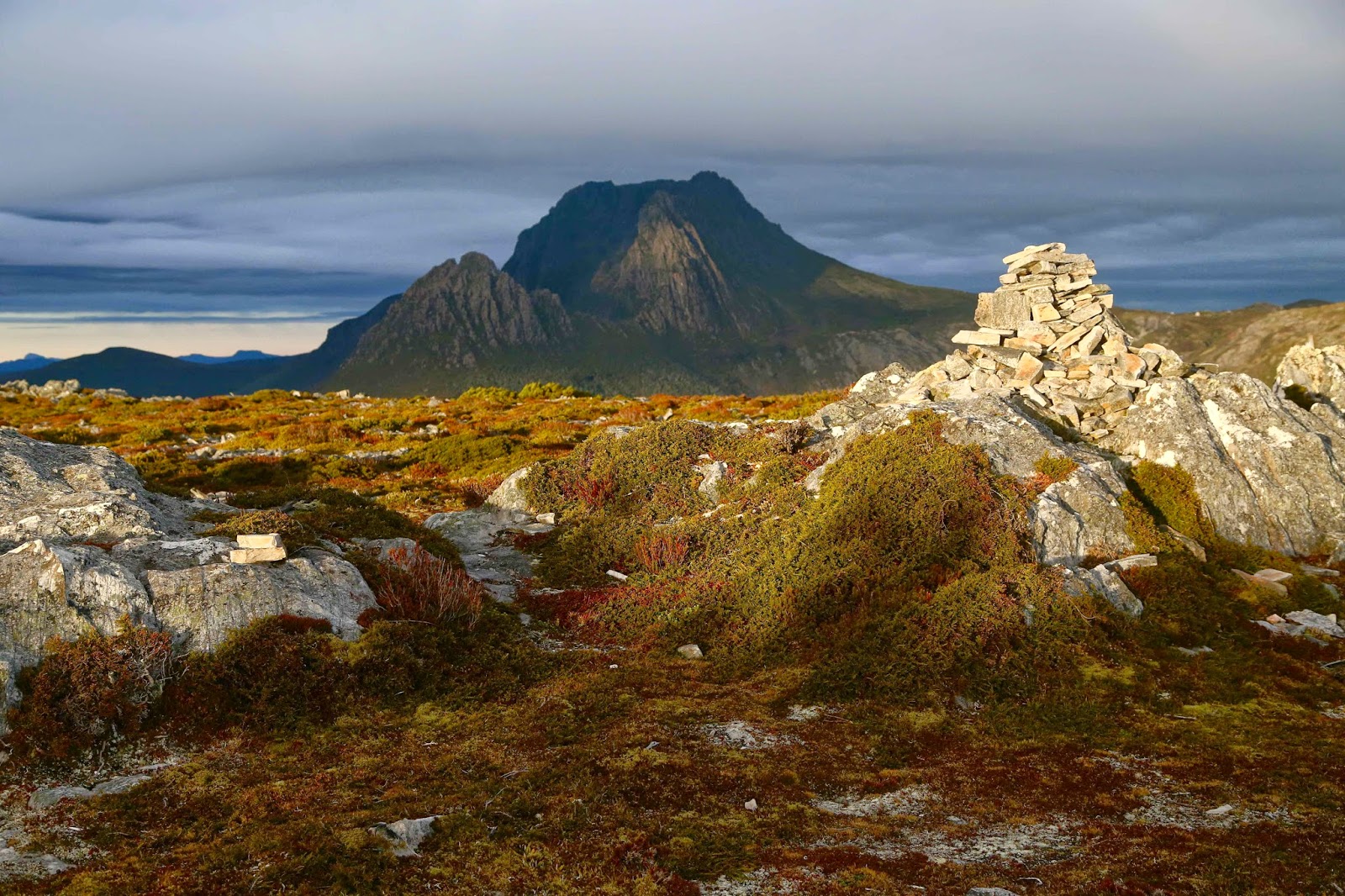Mt Rufus and my coldest tent night ever. June 2014.
The morning of my climb, Here is Rufus as seen from King William 1 earlier in the day. Should I climb her?
It was the depths of winter, and I was out and about solo.
I decided to camp on Mt Rufus and see what sunset and dawn were like from up there. I like sleeping on summits. I chose the Gingerbread track as my route.
All went well as I made height, until, just short of the summit, I came to a dramatic halt, and the first of many slides backwards. The top was now tantalisingly close, but every attempt to gain more height was met with a backwards skate which even wild clutching at green matter could not avert. There are two small huts on this approach to Rufus, and I had inspected both en passant while climbing. However, there was no way I was staying in either. Among the many objections (dust, gloom) was the main one, viz., that one little bod could never generate enough personal warmth to heat a hut. Much better to sleep in my tent, and to pitch it very quickly. I was rather alarmed at how speedily and suddenly everything was now freezing up. The whole mountain seemed to have instantaneously turned to ice. It was 4.40. Retreat to the bottom was not in question. I had to find something relatively flat and get the tent up, pronto, before my fingers froze to numb incapacity.
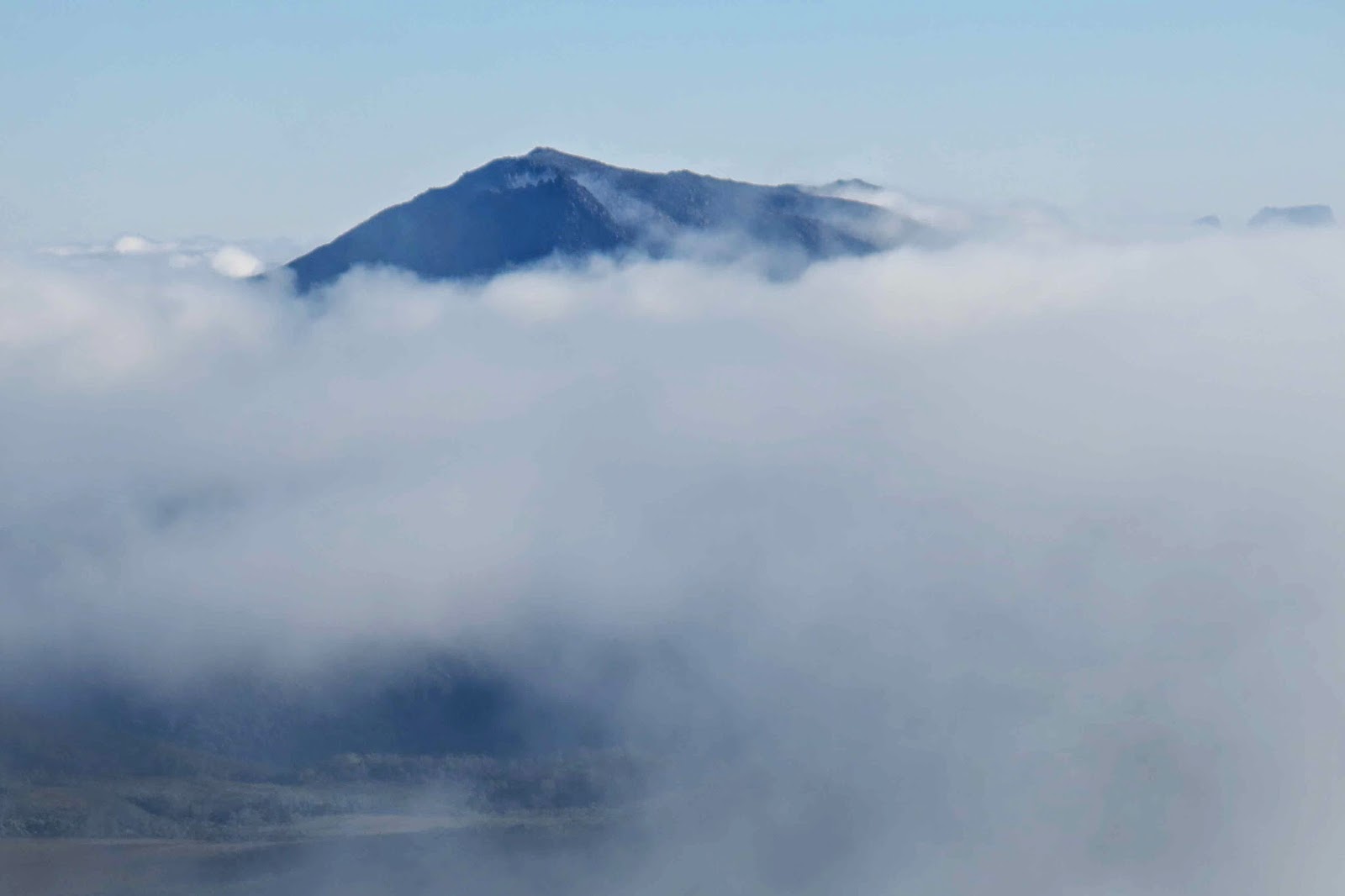
Closer shot of Rufus calling from afar.
I worked quickly, trying to feed the pole into its slot, and sighing with relief when I heard the final click that meant the ends were now in their rightful positions. With light now waning, I decided that the next important job was to cook. I didn’t want to use the vestibule and create a condensation problem, so felt very brave and cooked outside. First a cup of soup. While I drank it, enjoying warming my hands around the mug’s circumpherence, I noticed with alarm the way ice crystals were forming on both my gaiters and boots, climbing, as I watched, like a march of white ants up my legs. The tent flaps were also icing over as I drank. Quick. Cook main course too before you need to retreat inside. Dessert (chocolate, nuts and honey) could be had in my bag, later.
Climbing Rufus now
By 6 pm, I was inside, everything arranged for the night. I’d brought in a bottle of water and placed it under my sleeping bag so I’d have flowing drinking water in the morning when all creeks would be frozen. I placed another cup of water just outside, in the vestibule, about 20 cms away from me, so my body warmth would hopefully prevent it from solidifying. (I didn’t have it inside in case I knocked it over). I didn’t want frozen boots, so brought my boots and gaiters inside and placed them under the bottom edge of my sleeping bag (which is too long for me, so protects items like that).
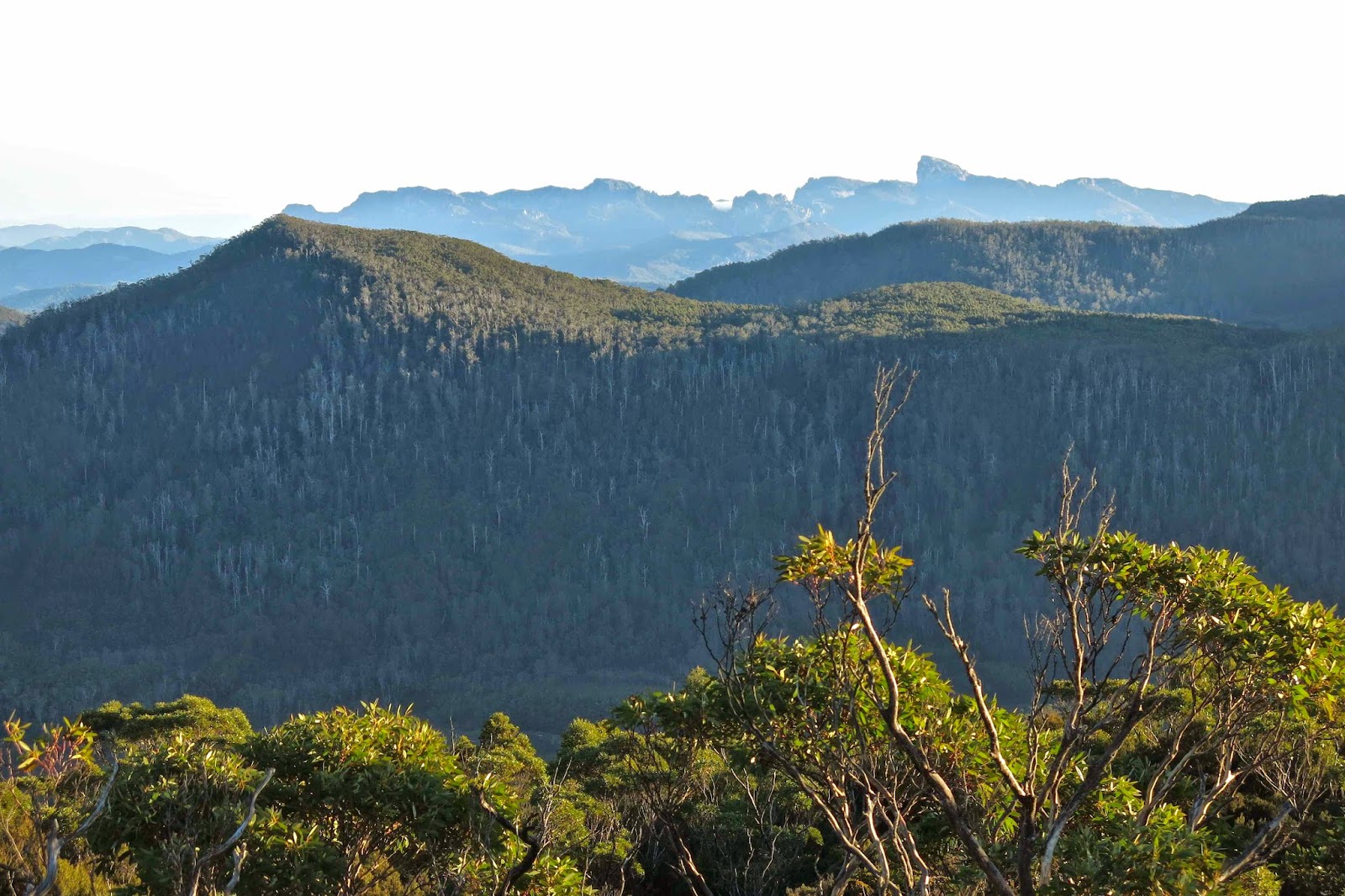 To bed, I wore 2 icebreakers, an O top, a fleece jacket, an Arcteryx thick jacket with hood up, possum gloves, helly long johns, O pants, lined outer pants, and 2 pairs of thick woollen socks, all inside my down bag which is good to minus five degrees. Underneath, I had a thick sleeping mat, and beneath that, a layer of carpet underlay. Then I tucked the end of my sleeping bag into one of my goretex jackets to protect the bag from moisture dropping from above (should the ice somehow melt), and another goretex jacket over my shoulders and upper torso. Over the middle section of my body, I placed my other down jacket. I was, you might say, well rugged up for this night … yet I was still cold.
To bed, I wore 2 icebreakers, an O top, a fleece jacket, an Arcteryx thick jacket with hood up, possum gloves, helly long johns, O pants, lined outer pants, and 2 pairs of thick woollen socks, all inside my down bag which is good to minus five degrees. Underneath, I had a thick sleeping mat, and beneath that, a layer of carpet underlay. Then I tucked the end of my sleeping bag into one of my goretex jackets to protect the bag from moisture dropping from above (should the ice somehow melt), and another goretex jacket over my shoulders and upper torso. Over the middle section of my body, I placed my other down jacket. I was, you might say, well rugged up for this night … yet I was still cold.
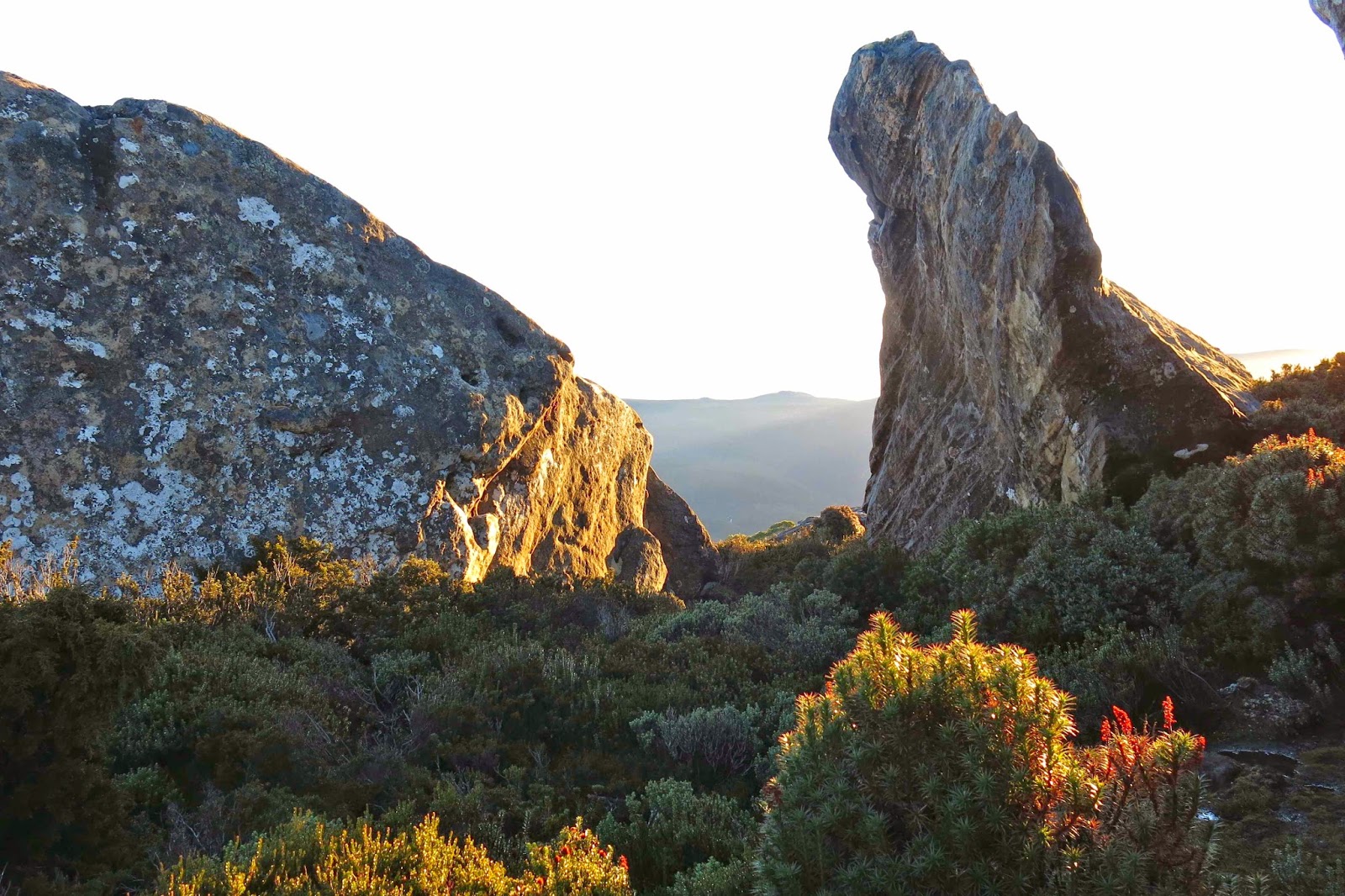
I thus embarked on a multi-hour exercise programme designed to keep me alive. Whenever I stopped, I could feel the cold creeping into my core, so began again. Mostly, I did bicycles, sometimes “Worms” – a kind of wave or serpentine writhing. Other times I did crunches and sit ups, and at yet others, went through a series of exercises our national coach once taught us, where we isolated each muscle in the body, and practised contracting and then relaxing it. His emphasis was on learning to relax; mine was on movement of every muscle to try to generate warmth and keep my metabolic rate at survival level. I kept all this up without looking at my watch, as a watched watch never progresses.
At 10 pm, however, I indulged in a peek. I was happy. Five hours down, nine to go. Over a third of the way there. Next peep was at midnight. Seven down, seven to go. Hey, I’ve survived half this night, I can do the other half.
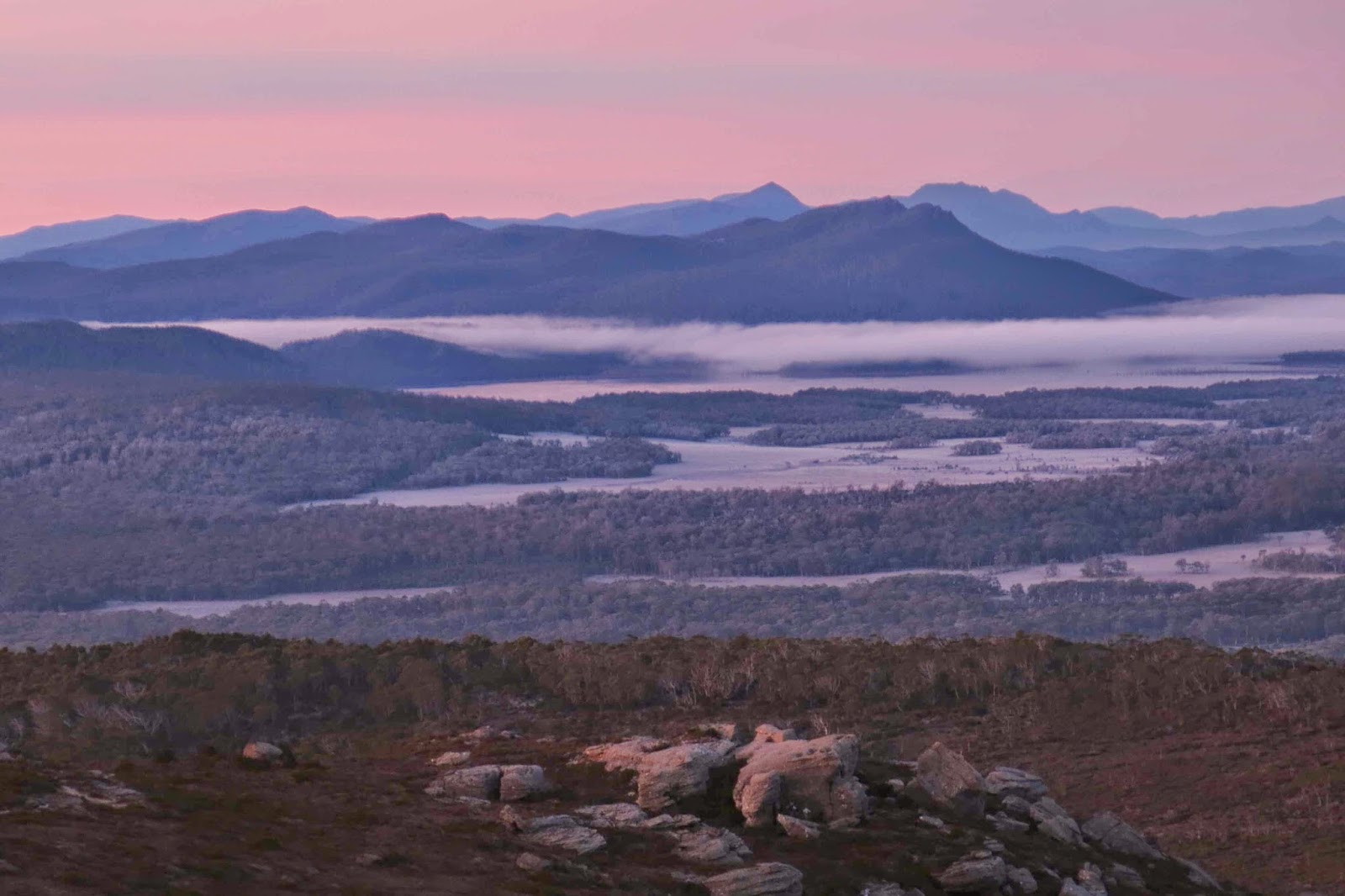
At 1 a.m., however, doubt crept in. My toes were getting numb, the backs of my hands were hurting, and I had developed a headache. When I sat up, I had to prise my now frozen hood from the also frozen tent flap, to which it had stuck in an unbroken stalactite. I noticed that the cup of water 20 cms from my body was a solid frozen block: not just iced over, solid. I remembered at this point that the worst was yet to come, that the coldest hour of any night is one hour before dawn, which meant there were five more hours in which it would get even colder. Could I keep up five hours more of this? I wasn’t fatiguing yet, but feared I might at some point in the future. At this juncture, I had a little midnight feast, not because I was hungry, but because eating raises your metabolism. Down went more chocolate and nuts, and some dried mango for variety.
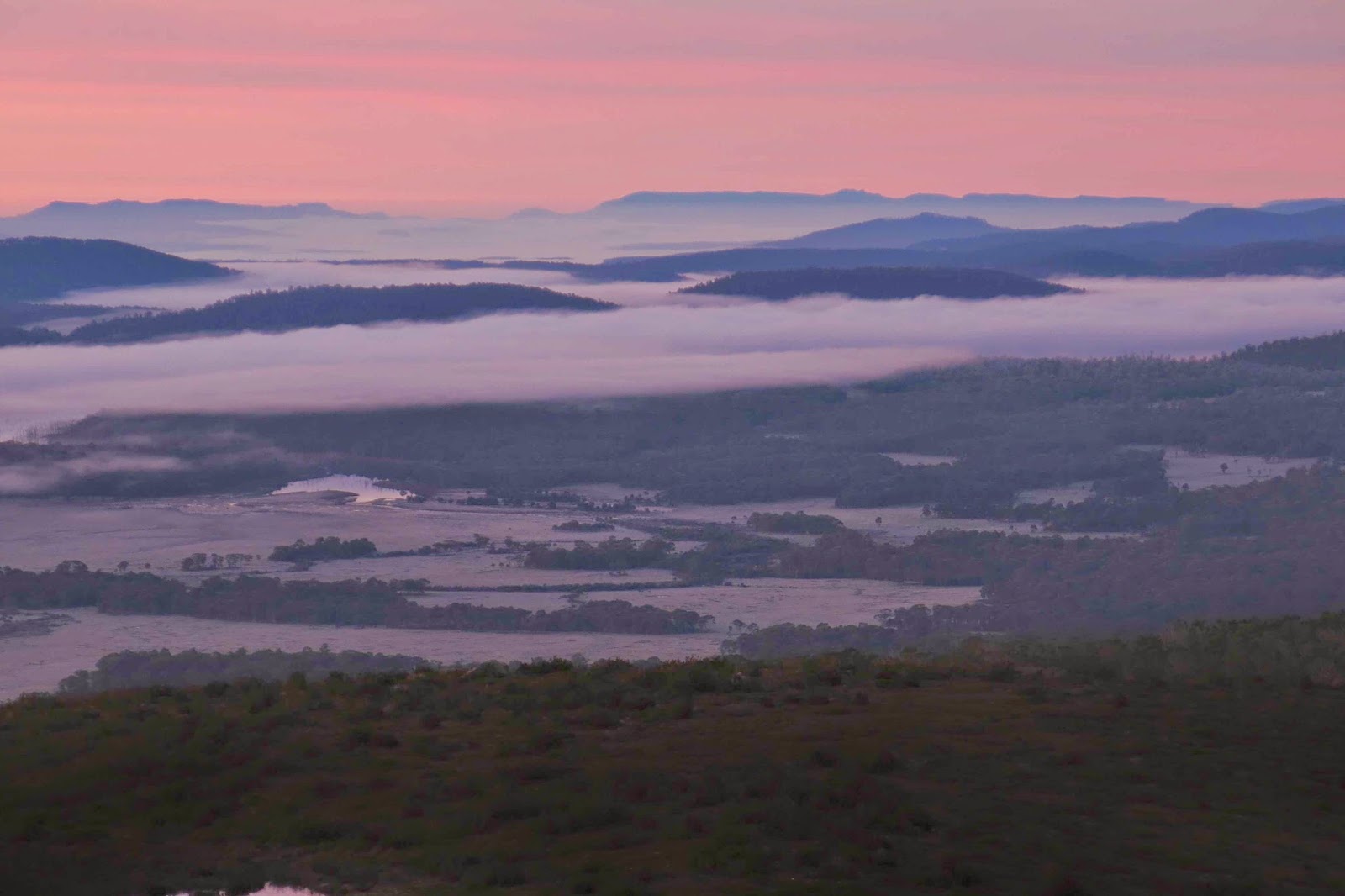
Believe it or not, I never posed the question: “What am I doing here?”, as I knew the answer. However, I did hear other imaginary people asking me, and while I lay there, I answered them. I explained that however much I enjoy contemplation – reflecting the sapiens part of my species’ name – I was also of the genus homo, order primates, member of the animal kingdom, and want to be allowed to be part of nature – and nature, is, by definition wild, not tamed by the pusillanimous and rapacious desires of bureaucrats and politicians.
Like Roger Deakin or Robert Macfarlane, whose books I greatly enjoy, as much as I enjoy culture – fine wine, theatre, restaurants, artwork, musical concerts – I also want to be part of the Wild, to be truly free. I do not want to be a member of our Brave New World of cosseted, somatised and compliant beings. I want to live, truly live, which means to know extremes. Here I was, experiencing a variety of the fury of nature, being wild and truly free.

I was worried about falling asleep, as I know that to fall asleep under certain conditions of hypothermia is to die, and that one must keep moving. I thought of the Jews who scored outer layers in the vans heading for Auschwitz, who died overnight. Penguins take turns at taking the outside, but not these prisoners, it seems. I thought of the Germans retreating from Russia, many of whom just lay down to die in the snow. I thought of the gutsy Russian survivors of Hitler’s siege of Leningrad, who, despite having almost no food or warmth during Hitler’s long cutting of supplies and energy to their city, nonetheless managed to endure much harsher conditions than I was now experiencing. I thought of how I’ve trained in Sweden when it was minus 15. The key is to keep moving. And I thought of my athlete friend from Austria, Gudrun Pfluger, four times world champion in my sport, who has run with wolves in Canadian forests, tracking and observing them in order to help save them. She must have withstood nights much worse than this. And while I thought, I cycled and continued my regime.
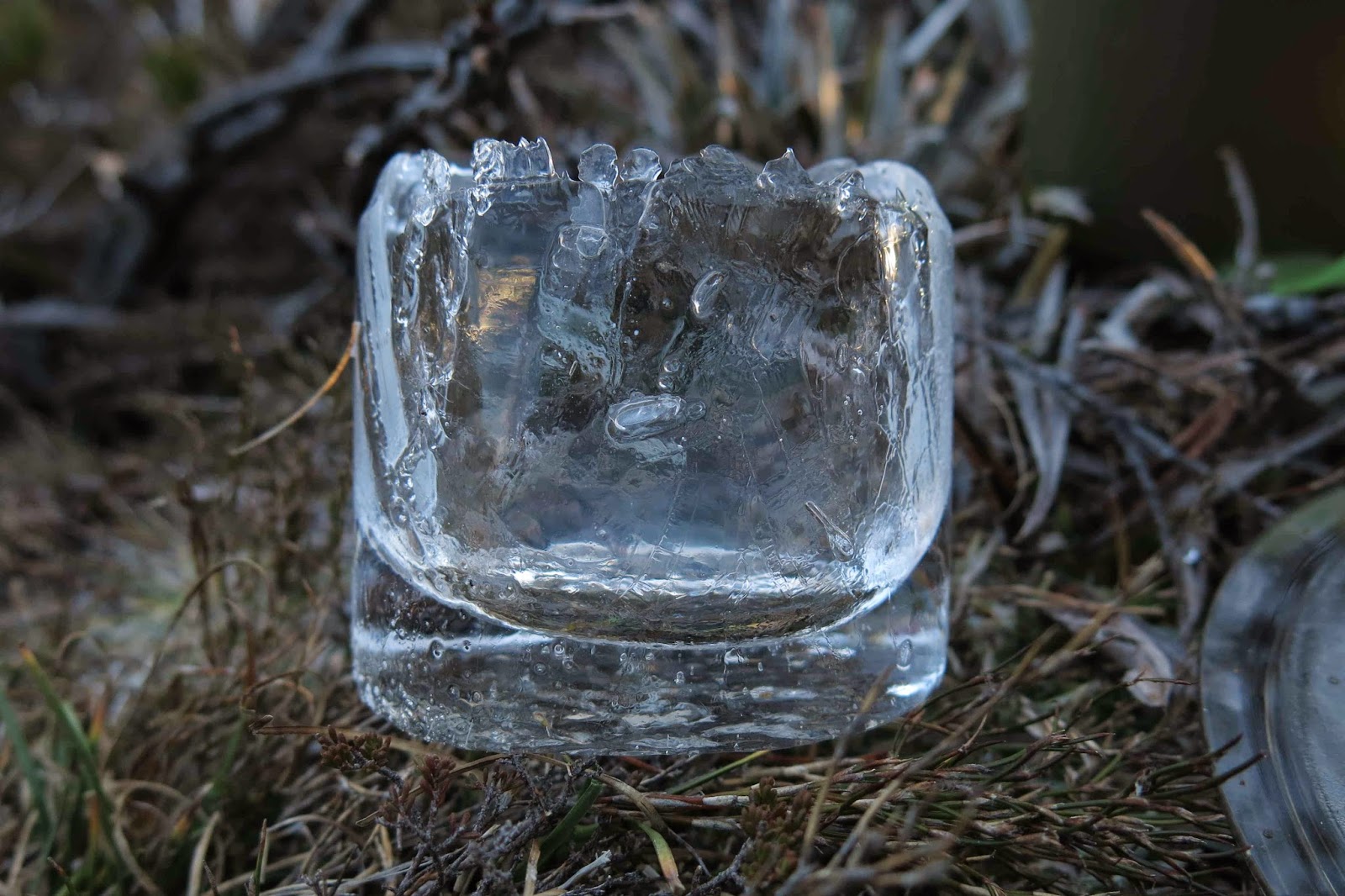
My cup-iceblock after I’d melted out its innards
Somewhere in all that thinking, I did the unthinkable: I dozed off. The next thing I knew it was light, 7.15 in the morning. I had survived. I opened my flap to a bright red north-western sky. High above, I could see cirrostratus clouds, heralding a change – a warm front. Perhaps that front is the reason it didn’t get any colder so that I could fall asleep in safety. My boots under my sleeping bag were frozen solid, and it was very difficult to force my feet into the steel frames they now seemed to be. My gaiters, too, also stored under my bag you’ll remember, were sheets of resistant metal that didn’t want to bend around my legs. I pushed and shoved and grunted and got there. Out I went to inspect the dawn (the beauty of which is depicted in the photos above).
At breakfast, porridge was fine, but I couldn’t have my next course – coffee, biscuits and honey – as my cup had this frozen block in it that wouldn’t budge. I put the mug in boiling water for a few minutes, but it still didn’t melt the ice. Then I poured boiling water on it, and that managed to dislodge it, melting the middle section, so I could tip it out.
Down near the bottom
As I descended later – in the bush, as the track was just a ribbon of black ice – I waited to drop below the freezing line, but it never happened. 600 metres below my camping spot, the world was still white. My guess is that it could have been colder than minus ten up there.
My car was enveloped in white crystals, but it worked. Off to the Hungry Wombat I went. I was alive, and aware of it in a completely new way. Every cell in my body was tingling with it, and it felt very, very good. I was positively bursting with the joy of the gift of life.
It’s the heart afraid of breaking
That never learns to dance.
It’s the dream afraid of waking
That never takes the chance.
It’s the one who won’t be taken
Who cannot seem to give;
And the soul afraid of dying
That never learns to live. (The Rose)
 To bed, I wore 2 icebreakers, an O top, a fleece jacket, an Arcteryx thick jacket with hood up, possum gloves, helly long johns, O pants, lined outer pants, and 2 pairs of thick woollen socks, all inside my down bag which is good to minus five degrees. Underneath, I had a thick sleeping mat, and beneath that, a layer of carpet underlay. Then I tucked the end of my sleeping bag into one of my goretex jackets to protect the bag from moisture dropping from above (should the ice somehow melt), and another goretex jacket over my shoulders and upper torso. Over the middle section of my body, I placed my other down jacket. I was, you might say, well rugged up for this night … yet I was still cold.
To bed, I wore 2 icebreakers, an O top, a fleece jacket, an Arcteryx thick jacket with hood up, possum gloves, helly long johns, O pants, lined outer pants, and 2 pairs of thick woollen socks, all inside my down bag which is good to minus five degrees. Underneath, I had a thick sleeping mat, and beneath that, a layer of carpet underlay. Then I tucked the end of my sleeping bag into one of my goretex jackets to protect the bag from moisture dropping from above (should the ice somehow melt), and another goretex jacket over my shoulders and upper torso. Over the middle section of my body, I placed my other down jacket. I was, you might say, well rugged up for this night … yet I was still cold.



